

Bottom of a Cruise Ship (Every Part Explained)
This article may contain affiliate links .
The bottom of a cruise ship might not be the first thing that comes to mind when you think of a luxurious cruise journey, but it is undeniably one of the most vital components of maritime design and engineering.
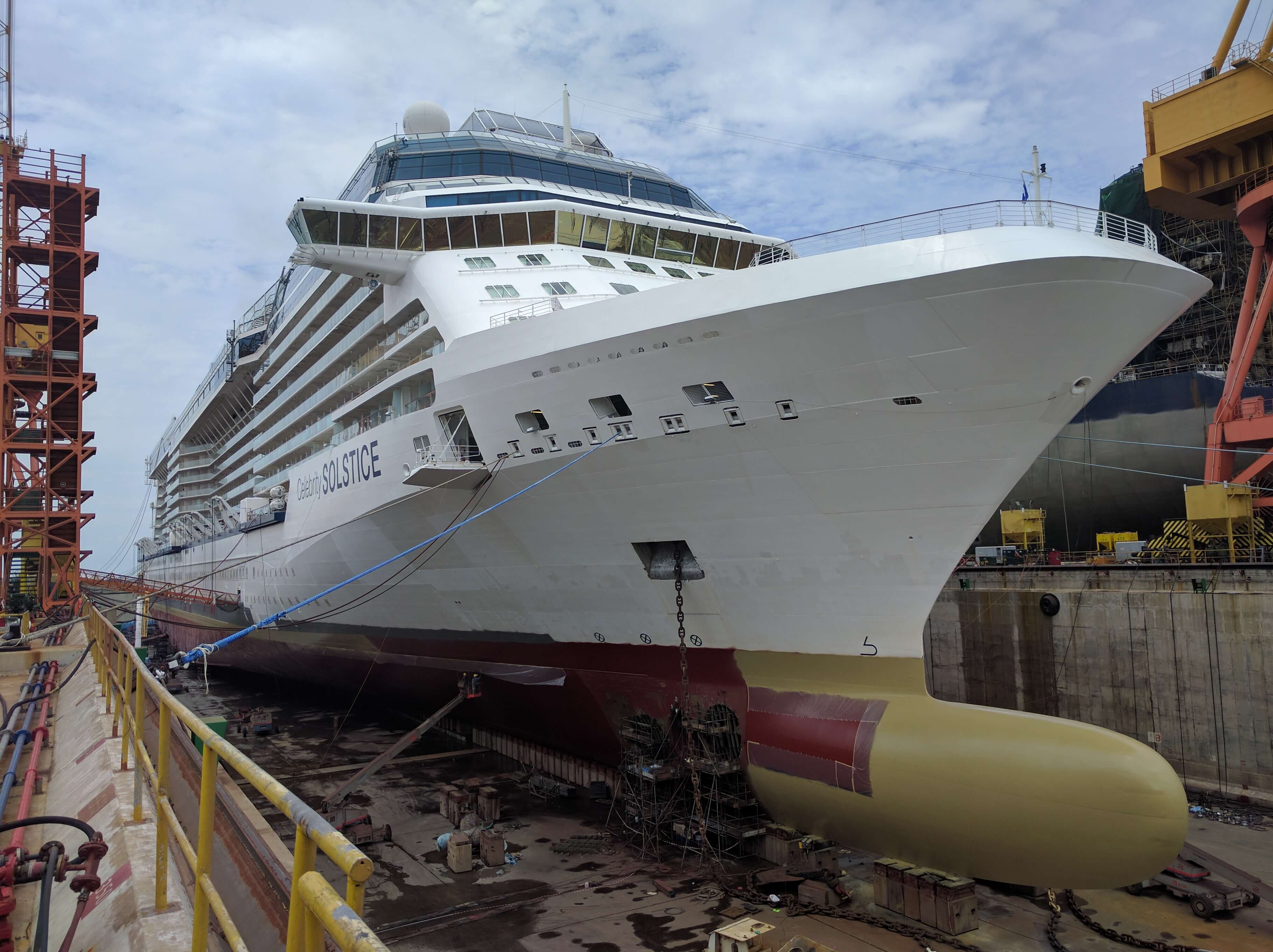
As you stand aboard a grand cruise ship, captivated by its opulent amenities and the vast seascape, it’s easy to forget the marvel that lies submerged beneath the waterline.
This crucial part of the ship, often overshadowed by its above-deck counterparts, plays a foundational role in ensuring performance, safety, and sustainability.
Delving into the intricacies of a cruise ship’s underside offers insights into the world of naval architecture, dispelling myths and revealing the innovations that guarantee our voyages are not only enjoyable but also safe.
Let’s embark on a deep dive into the unseen hero that keeps these magnificent vessels afloat.
What Is the Bottom of a Cruise Ship Called?
For those unfamiliar with naval terminology, deciphering the various parts of a ship can seem like navigating through a linguistic maze.
When it comes to cruise ships, or any seafaring vessel, the ‘bottom’ has its own special designation, deeply entrenched in shipbuilding traditions and maritime lore.
The bottom of a cruise ship is commonly referred to as the “hull.” The hull is the watertight body of the ship, extending from the main deck to the very base.
It is integral to buoyancy, stability, and the overall structural framework of the vessel.
Built to counteract water pressure, stave off corrosion, and facilitate smooth sailing, the hull’s design and materials are specifically tailored for maritime conditions.
Within the hull, there are distinct subdivisions:
Often regarded as the ship’s backbone, the keel runs centrally from the front to the back at the very bottom. It grants the ship its structural strength and is paramount for stability.
Situated at the lowest part of the ship’s hull, the bilge is where water typically accumulates due to various factors like condensation, potential leaks, or specific onboard activities.
Ships are equipped with bilge pumps designed to expel this water, ensuring the vessel remains dry and secure.
A protrusion at the front bottom of many modern ships, including cruise ships. This unique design helps reduce resistance as the ship moves through water, increasing fuel efficiency and speed.
It also aids in reducing the bow waves, making voyages smoother for passengers.
Over the centuries, the design and nuances of the hull have continually evolved, reflecting advancements in technology and the distinct requirements of diverse ship categories.
In the context of cruise ships, the hull stands out as especially vital, safeguarding the journey of thousands of passengers and crew members as they traverse the vast oceans.
To sum up, while the phrase ‘bottom of a ship’ may sound elementary, it unfolds a universe of design, engineering, and maritime heritage in the embodiment of the hull. It showcases mankind’s remarkable capacity to innovate and master the challenges of the deep blue.
What Does the Bottom of Cruise Ships Look Like?
The exterior of cruise ships, with their towering decks and panoramic windows, often captures the imagination of spectators. Yet, the underwater portion, though unseen by most passengers, is an engineering marvel in its own right.
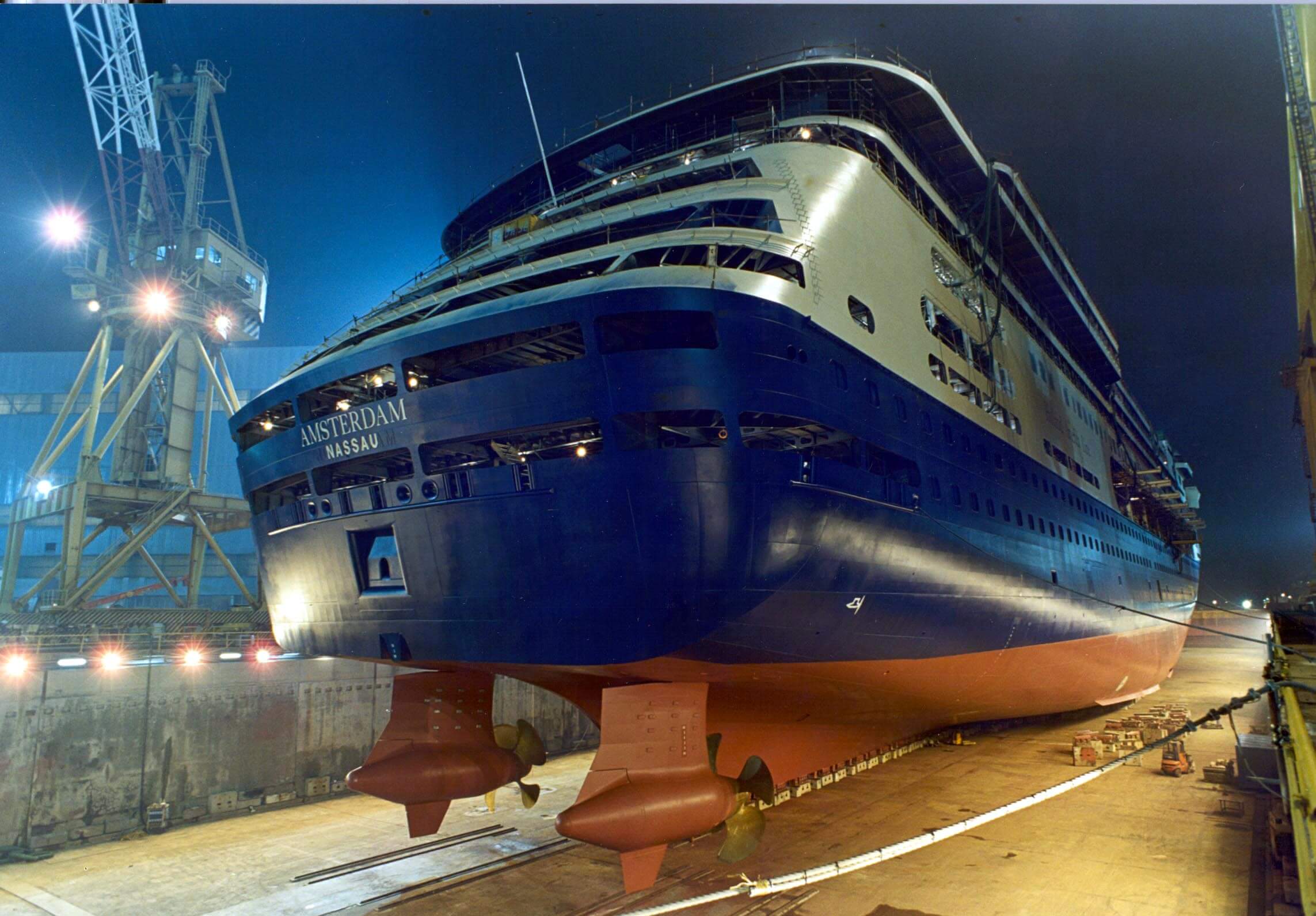
Image credit: Bolici
So, what does it look like underneath a cruise ship?
Shape and Structure
The underbelly of a cruise ship is streamlined and sleek, designed for efficient movement through water. While the top of the ship might have multiple decks and superstructures, the bottom narrows down to a smooth, somewhat flat surface, tapering towards the stern and bow.
Material and Color
Typically made of robust steel, the hull has a thickness that can handle the immense pressures of the sea. It is often coated with a specialized paint known as anti-fouling paint.
This unique paint, usually dark in color (like blue or black), prevents marine organisms like barnacles and algae from attaching to the ship, ensuring smoother movement and better fuel efficiency.
Bulbous Bow
As previously mentioned, many modern cruise ships have a bulbous protrusion at the front bottom. This rounded extension is easily identifiable and plays a pivotal role in enhancing the ship’s hydrodynamics.
Rudders and Propellers
Towards the stern of the ship, one can find the ship’s rudders and propellers. These critical components steer the ship and provide thrust, respectively. They are massive in size, with some cruise ship propellers spanning several meters in diameter.
Stabilizers
Extending from the sides of the hull are stabilizer fins, similar in appearance to airplane wings but submerged. They help counteract the ship’s roll, ensuring a more stable and comfortable journey for passengers.
Sensors and Equipment
The hull might house various sensors, like sonar, which assist in navigation and detecting underwater obstacles. These devices are often recessed or streamlined to maintain the smooth contour of the ship’s underside.
Keel and Bilge
Right at the center and deepest part of the bottom, the keel runs longitudinally, acting as the ship’s backbone. The bilge, a slightly curved section, is where water collects and is expelled by bilge pumps.
In essence, the bottom of a cruise ship is a fusion of form and function, showcasing advanced engineering tailored for the unique demands of maritime travel.
It’s an intricate balance of design elements, all working in harmony to navigate the complexities of the ocean and provide passengers with unforgettable voyages.
How Far Underwater Is The Bottom Of A Cruise Ship?
One of the marvels of maritime engineering is the ability to float structures weighing several tons effortlessly on water. Cruise ships, often referred to as “floating cities” due to their vastness, are a prime example.
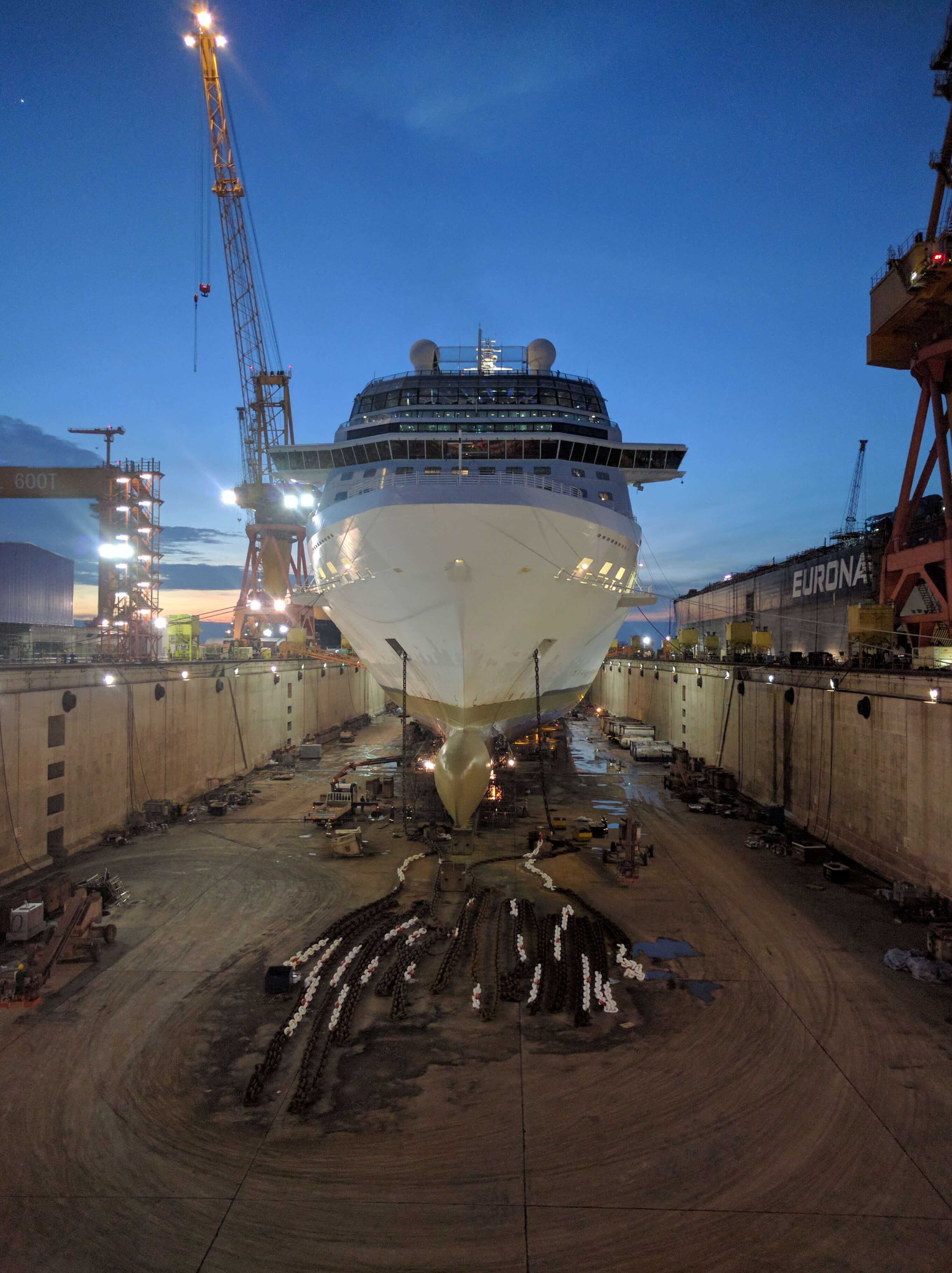
But just how deep does the bottom of such a vessel sit underwater? This submerged portion of the ship is technically termed its “draft.” Here’s an exploration of that aspect
Understanding Draft
The draft of a ship refers to the vertical distance between the waterline and the lowest point of the vessel’s keel. In simple terms, it indicates how much of the ship is underwater
Factors Influencing the Draft
Ship’s load.
As a ship takes on more weight, be it cargo, fuel, provisions, or passengers, it will sit deeper in the water, increasing its draft.
Water Density
Saltwater is denser than freshwater. So, a ship will sit slightly higher (have a shallower draft) in the ocean compared to a freshwater lake or river, all else being equal.
Temperature and Salinity
Variations in water temperature and salinity can influence its density, subsequently affecting the ship’s draft.
Typical Draft of a Cruise Ship
Cruise ships vary in size, from smaller luxury vessels to mega-ships. The draft can range considerably based on this:
Smaller Cruise Ships
They might have a draft ranging from 20 to 25 feet (6 to 7.6 meters).
Medium to Large Cruise Ships
These can have drafts anywhere from 25 to 30 feet (7.6 to 9.1 meters).
Mega Cruise Ships
The largest of cruise ships can have drafts exceeding 30 feet (9.1 meters), with some even approaching 40 feet (12.2 meters).
Operational Considerations
Navigating shallow waters.
Cruise ships sometimes need to access ports located in shallower waters. In such cases, having a shallower draft is beneficial. Some ships are specially designed with this in mind to expand their potential itineraries.
Ballast Systems
Modern cruise ships are equipped with ballast systems that can adjust the amount of water they carry, thereby influencing their draft to some degree, helping in optimizing stability and navigating varying water depths.
Safety Margins
While understanding the draft is essential for navigation, ships also maintain safety margins. This ensures that they don’t accidentally scrape the seabed when navigating areas close to their maximum draft.
In essence, the portion of a cruise ship that’s submerged underwater is influenced by a variety of factors, both inherent to the ship’s design and external conditions.
While passengers aboard enjoy the panoramic views and luxurious amenities, the depth at which the ship’s bottom sits plays a pivotal role in its safe and efficient navigation.
Are Cruise Ship Bottoms Flat?
The design and structure of cruise ships are fascinating topics of exploration, and a common question that arises is regarding the shape of their bottoms.
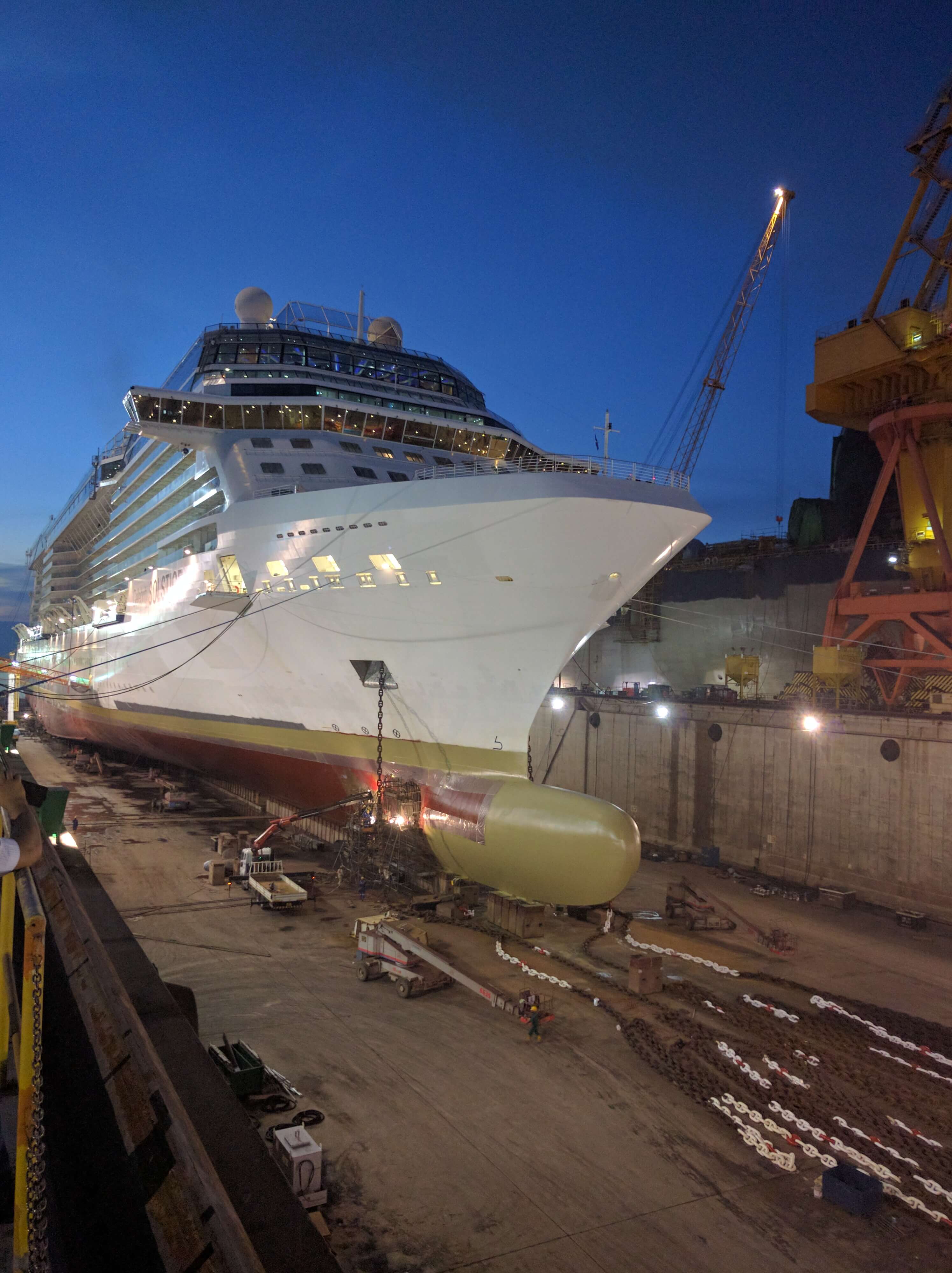
Are they flat, as one might presume when considering the massive size and weight of these vessels?
Let’s have a look:
General Design
At first glance, one might assume that the large, broad base of a cruise ship would be flat to maximize stability. However, the reality is more intricate.
Cruise ship bottoms are not entirely flat; they have a somewhat curved design, especially noticeable from the bow to the stern.
Why Not Completely Flat?
Several reasons dictate the non-flat design
Hydrodynamics
A completely flat bottom could create more resistance as the ship moves through the water. A slightly curved design allows for smoother passage, reducing drag and improving fuel efficiency.
Buoyancy and Stability
The curved design distributes the ship’s weight more evenly, allowing it to float and move with more balance, especially in rough seas.
Dealing with Depths
A slightly raised or curved design in certain parts of the bottom ensures the ship doesn’t run too deep, especially helpful when navigating shallower waters or ports.
Considerations in Modern Shipbuilding
As cruise ship designs evolve, so do the considerations for their hull shape. Environmental concerns, fuel efficiency, passenger comfort (minimizing motion sickness), and navigational needs all play roles in determining the precise curvature and features of a ship’s bottom.
Basically, while cruise ships might appear to have a vast, flat base given their immense size, their bottoms are not strictly flat.
They are designed with a subtle curvature and specific features that cater to the complex demands of maritime engineering, ensuring efficient, safe, and comfortable voyages for all on board.
Why is the Bottom of a Ship Painted Red?
The distinctive red color often seen painted on the bottom of ships, both historic and contemporary, is more than just an aesthetic choice.
This age-old tradition has a foundation in practicality, functionality, and maritime science. Here’s a closer look at why ships frequently don this fiery hue below the waterline:
Historical Use of Copper
In the age of wooden ships, sailors discovered that sheets of copper or copper-based paint on a ship’s hull would prevent marine organisms like barnacles and teredo worms from boring into the wood and damaging it. Copper, when in contact with seawater, releases ions that have anti-fouling properties.
The characteristic reddish-brown color of oxidized copper led to a distinct red hue on the ship’s bottom.
Anti-fouling Paint
Marine organisms attaching to the hull – known as fouling – significantly impact a ship’s performance and durability. It can increase drag, reduce speed, and lead to higher fuel consumption.
Modern anti-fouling paints, which are successors to the original copper sheathing method, often still contain cuprous compounds. While there are varying colors available today, the traditional red remains a popular choice due to its historic ties.
Visibility of Damage and Fouling
Red offers a stark contrast to the deep blues and greens of ocean waters. This contrast makes it easier for sailors and dock workers to spot damages, leaks, or excessive fouling on the ship’s hull.
Tradition and Aesthetics
Over time, the red bottom became a maritime tradition. Even with the evolution of marine paints and coatings, many ship owners and builders still prefer the classic red for its aesthetic appeal and nod to seafaring heritage.
Economical and Practical
Red pigments were historically more affordable and abundant, making them a cost-effective choice for shipbuilders and owners.
Variations in Hue
It’s worth noting that while red is common, it’s not universal. Different shades ranging from brownish-red to pink or even other colors like black and blue can sometimes be observed.
These choices can be influenced by the specific anti-fouling product used, company branding, or other functional considerations.
In summary, the red bottom of ships is a marriage of practicality and tradition. While it has its roots in the bygone era of wooden vessels and copper sheathing, the color persists today as a symbol of maritime legacy, aided by the practical benefits it continues to offer in the modern age.
How Do You Clean the Bottom of a Cruise Ship?
Ensuring the hull of a cruise ship is clean is not just an aesthetic concern; it’s crucial for the vessel’s efficiency, safety, and environmental footprint.
Over time, marine organisms, such as barnacles, algae, and mussels, can attach themselves to the ship’s bottom. This phenomenon, known as biofouling, can slow the ship down, increase fuel consumption, and even damage the hull.
So, how do cruise lines keep these gigantic vessels in pristine condition beneath the waterline?
Dry Docking
This is the most comprehensive method for cleaning and maintaining the hull. Every few years, cruise ships are scheduled for dry docking. During this process, the entire vessel is taken out of the water, allowing workers to access and clean the ship’s bottom thoroughly.
This is also an opportunity to inspect the hull for damages, repaint it with anti-fouling paint, and conduct any other necessary repairs or upgrades.
Underwater Cleaning Robots
With advancements in technology, some cruise lines employ automated underwater robots or remotely operated vehicles (ROVs) equipped with brushes and cameras.
These devices can scrub the hull’s surface while the ship is still in the water, removing accumulated organisms and grime.
For specific tasks, or when robots might not be feasible, trained divers are deployed. They manually clean and inspect the hull using specialized tools. This method is particularly useful for addressing localized issues or conducting minor repairs.
Anti-fouling Coatings
One preventive measure against biofouling is the application of anti-fouling paint. These coatings release biocides, substances that deter marine organisms from attaching to the hull.
The paint not only provides a smoother surface, reducing drag and enhancing fuel efficiency, but also minimizes the need for frequent cleanings.
Ultrasonic Systems
Some modern ships are equipped with ultrasonic anti-fouling systems. These use ultrasonic waves to prevent marine growth on the hull.
The vibrations create an environment that’s unfavorable for organisms, thereby preventing them from settling on the ship’s bottom
Eco-friendly Solutions
With growing environmental concerns, the maritime industry is continuously exploring eco-friendly solutions for hull cleaning. Techniques that don’t rely on harmful chemicals and that cause minimal disruption to marine ecosystems are being prioritized.
Maintaining the cleanliness of a cruise ship’s bottom is an ongoing task that combines manual efforts, technological solutions, and preventive measures.
The commitment to keeping these colossal vessels clean underscores the importance of efficiency, safety, and environmental responsibility in the cruise industry.
What is in the Bottom of a Cruise Ship?
While the vast decks and luxurious amenities are what usually capture the attention of cruise-goers, the bottom levels, often hidden from the guests’ view, play a pivotal role in ensuring the smooth operation of the entire vessel.
These areas, which make up the foundational layers of the ship, are both functional and crucial for safety. So, what exactly can one find in the bottom of a cruise ship?
Engine Rooms
Typically situated deep within the ship, the engine rooms house the primary machinery that powers the cruise ship. From massive diesel engines to electrical systems, this is where the ship’s heartbeat resides.
Large tanks containing the fuel needed to power the ship’s engines are usually located towards the bottom. Their placement helps in maintaining the ship’s balance and stability.
Ballast Tanks
Ballast tanks play a vital role in maintaining a ship’s stability. They can be filled or emptied of water to adjust the ship’s weight and balance. This is particularly useful when accommodating changes in fuel weight or cargo distribution.
As mentioned earlier, the bilge is the lowest point of the ship where water, from sources like condensation or minor leaks, collects. Bilge pumps are stationed here to expel this water and ensure the ship remains dry.
Stabilizers’ Machinery
While the actual stabilizers are external and protrude from the sides of the ship, the mechanisms and controls that operate them are located within the lower levels.
Waste Treatment Facilities
Modern cruise ships are equipped with advanced waste treatment systems that handle and process sewage, gray water, and other waste products. This ensures environmental regulations are met and minimizes pollution.
Storage Areas
The bottom levels often contain vast storage rooms. These are crucial for storing provisions, from food and drink to spare parts and other essential supplies needed for long voyages
Crew Quarters
While crew members reside throughout the ship, some crew quarters, especially for those working in the engine rooms or other lower-deck service areas, might be located towards the ship’s bottom.
Laundry Facilities
Given the number of guests and the volume of linens, towels, and uniforms, cruise ships require extensive laundry facilities. Some of these operations are located in the lower decks due to space requirements and logistical convenience.
Water Tight Compartments
For safety, the bottom of the ship contains several watertight compartments. In the event of a breach or flooding, these compartments can be sealed off to prevent water from spreading and compromising the ship’s buoyancy and stability.
In essence, the bottom of a cruise ship is a bustling hub of crucial operations and facilities, all working seamlessly behind the scenes.
These layers ensure that guests above can enjoy their journey with peace of mind, blissfully unaware of the intricate dance of engineering and logistics taking place below their feet.
Videos Underneath a Cruise Ship
Here’s an interesting video of a guy dropping a gopro underneath a cruise ship…
And here’s a video of a cruise ship in drydock:
To Sum It Up
The bottom of a cruise ship, often overshadowed by the vessel’s towering decks and luxurious amenities, holds a rich tapestry of engineering, history, and maritime tradition.
From the precise design of the hull to ensure hydrodynamic efficiency and stability, to the depths at which these massive ships sit in the water, and the distinctive red hue that has colored the undersides of vessels for centuries, each aspect serves a purpose rooted in functionality and heritage
. The red paint, in particular, is a vivid testament to the blending of past maritime practices with contemporary needs, symbolizing the enduring spirit of naval exploration and adventure.
As passengers sail to their next destination, they’re buoyed by a legacy of seafaring innovation and tradition that lies beneath them, ensuring every voyage is safe, efficient, and in harmony with the vast oceans that cradle these magnificent vessels.
More Reading...
- 47 of the Best Family Travel Blogs
- Best Binoculars For Alaska Cruise
- Norwegian Cruise Line vs. Celebrity Cruises Compared
- Best Travel Tea Sets
- Princess Cruises vs. Norwegian Cruise Line: A…
- Best Adventure Travel Blogs
Dan Claydon
- Credit cards
- View all credit cards
- Banking guide
- Loans guide
- Insurance guide
- Personal finance
- View all personal finance
- Small business
- Small business guide
- View all taxes
You’re our first priority. Every time.
We believe everyone should be able to make financial decisions with confidence. And while our site doesn’t feature every company or financial product available on the market, we’re proud that the guidance we offer, the information we provide and the tools we create are objective, independent, straightforward — and free.
So how do we make money? Our partners compensate us. This may influence which products we review and write about (and where those products appear on the site), but it in no way affects our recommendations or advice, which are grounded in thousands of hours of research. Our partners cannot pay us to guarantee favorable reviews of their products or services. Here is a list of our partners .
How a New Cruise Ship Is Built

Many or all of the products featured here are from our partners who compensate us. This influences which products we write about and where and how the product appears on a page. However, this does not influence our evaluations. Our opinions are our own. Here is a list of our partners and here's how we make money .
Cruise ship construction is an enormous undertaking that involves thousands of decisions and logistical planning protocols that must be precisely set and coordinated in just the right order.
Watching a ship come together is a fascinating process, and I was able to witness it firsthand in Saint-Nazaire, France, where the Celebrity Apex was being built as the second in a series of five Celebrity Edge ships at the Chantiers de l’Atlantique shipyard.
The scope of building a ship
The ship is actually built in stages, often in different locations before being put together like a jigsaw puzzle or a game of Legos. It comes together as the result of 1,000 key steps, 200,000 different tasks, and the involvement of 500 subcontractors and suppliers. According to shipyard officials, each shipyard completes the process a bit differently.
For the Celebrity Apex, it has taken one year to go from having its first pieces of steel cut and prepared to seeing the final touches added before its March 2020 delivery to Celebrity Cruises.
More than 1.5 million manpower hours are involved in putting such a large ship together. In fact, the building of the ship begins even while engineering work is still going on; such is the large-scale nature of this process.
3D imagery and virtual reality are used in creating the mockups and models, which allow interior designers to take tours of the ship before it is built. They can decide where to most efficiently install electrical outlets or piping, as well as how the style of the interiors will come to life. No one wants a power outlet on the ceiling!
This process also allows designers to work on various parts of the ship simultaneously instead of needing to have each be ready before another can start.
» Learn more: Does cruise travel fit into your points and miles strategy?
Starting construction
It takes six months to build the outer structure of the ship, which is then stocked with passenger cabins, restaurants, public areas, bathrooms, and hundreds of miles of electrical wires and plumbing pipes.
Large cranes capable of lifting 1,400 tons at a time put each of the pieces together into what we recognize as a cruise ship.
Stacking cabins like Legos
For me, the most surprising element of ship construction was that most of it is actually built elsewhere. The ship as a whole consists of dozens of smaller parts, including cabins, which are each built at an assembly line.
The assembly line includes the installation of almost all passenger amenities — light fixtures, wiring, power outlets, furniture, TVs, beds, bathroom fixtures and even trash cans — so that when cabins are stacked into the ship, their electrical wires and plumbing can be instantly connected to the rest of the vessel. There is little additional work that needs to be done once the cabin is loaded onto the ship.
In fact, more than 3,000 miles of electrical wires come affixed to the cabin; some suites have even more due to their more spacious quarters. Everything must arrive to the ship at the right time and at the right place.
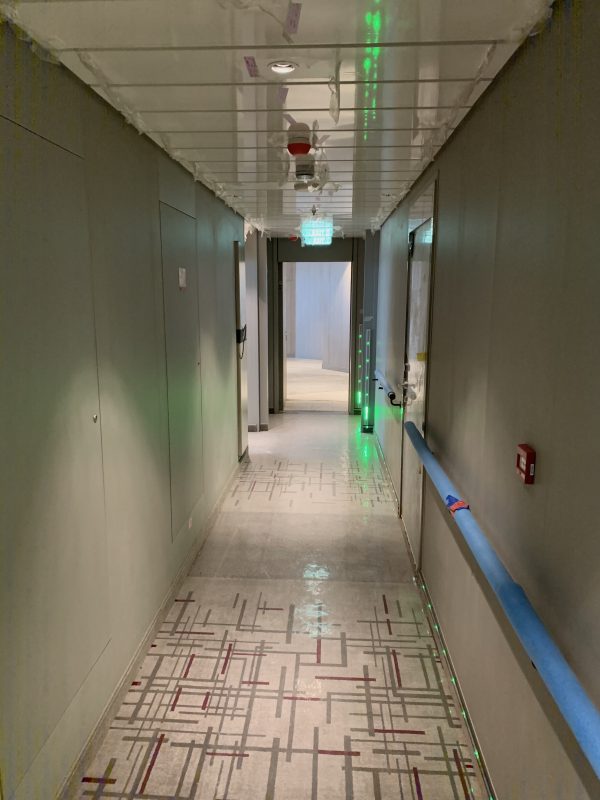
One installed in the ship, each cabin is furnished with decor and amenities in as few as 20 minutes, as staffers pass through installing facilities and cross-check one another's work.
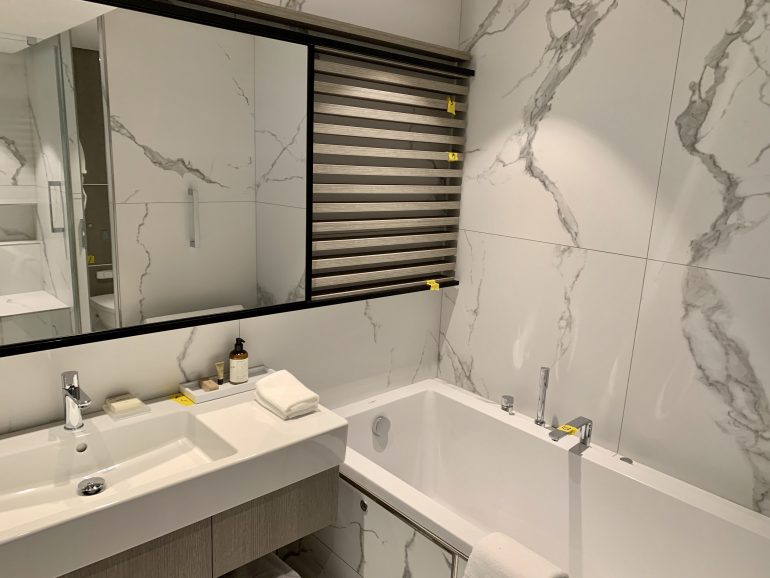
If you think about it, the cabins must come furnished because large items like beds and sofas would not fit through many ship doorways or hallways. Once the cabins are stacked across the previously built hull, the steel sides are wrapped around the vessel. Designers had left cutouts where the windows and balconies belong.
Altogether, more than 40 individual blocks and 500 panels — each constructed off-site — are eventually integrated into the ship’s frame, which composes 250,000 steel parts representing 25,000 tons of steel.
» Learn more: Our family vacation: A Mexican cruise for 5
Wood, weight and 'wow factor'
Wood is not allowed in the construction of the ship because it can easily burn. Those walls in your room might be covered by wallpaper and artwork, but they are actually made from metal and steel.
The weight of the ship must be balanced and optimized, with a focus on keeping the center of gravity low to the waterline. Celebrity Cruises has a team that manages the weight of everything aboard the ship. Once designers choose what they want to install on the ship, a separate team of engineers gets involved to see if there are more lightweight options to use.
It is a balancing act to reduce weight while also maintaining the overall design aesthetic and “wow factor” of the ship.
Heavier materials are less efficient at the top of the ship; no one wants a top-heavy ocean liner. Thus, the Celebrity Apex uses a more eco-friendly material that looks just like glass for the transparent atrium in the Solarium — though it weighs only 1% of what glass would weigh. Other materials like lightweight carbon fiber help offset the weight of steel and fuel tanks.
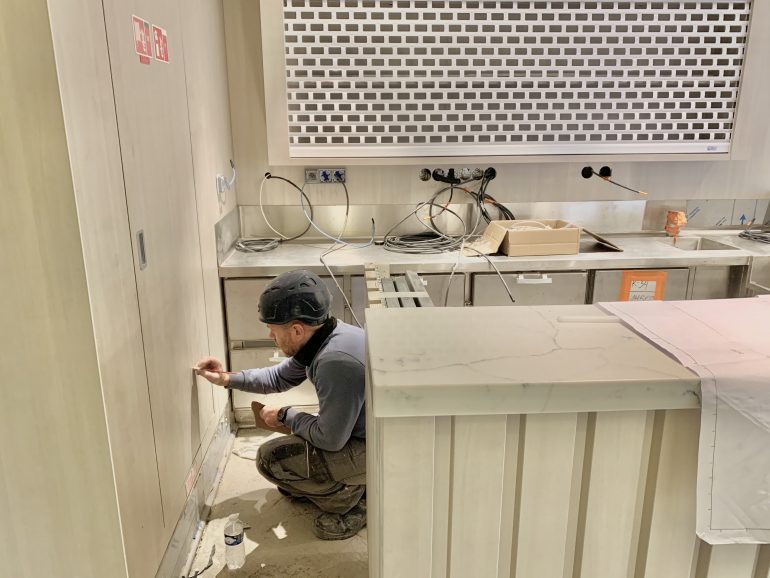
Even the smallest details like room and public area signage is examined by a variety of teams from lawyers to marketing experts. To convey important messages, the cruise line wants to be informative without being stern.
For example, small placards by toilets in cabin bathrooms say, “Excuse me, only toilet paper please.” Throwing anything else into these vacuum toilets can cause plumbing stopups.
» Learn more: Should you insure your cruise?
What’s new on board
Adding new amenities for passengers can sometimes pose challenges for designers. New features like the Magic Carpet (also aboard sister ship the Celebrity Edge), required plenty of additional planning.
This cantilevered deck ascends the side of the ship between decks 2 and 16, allowing guests to dine or gather with panoramic views while more comfortably boarding smaller tender boats to go ashore when needed. It essentially is an external elevator on the side of the ship.
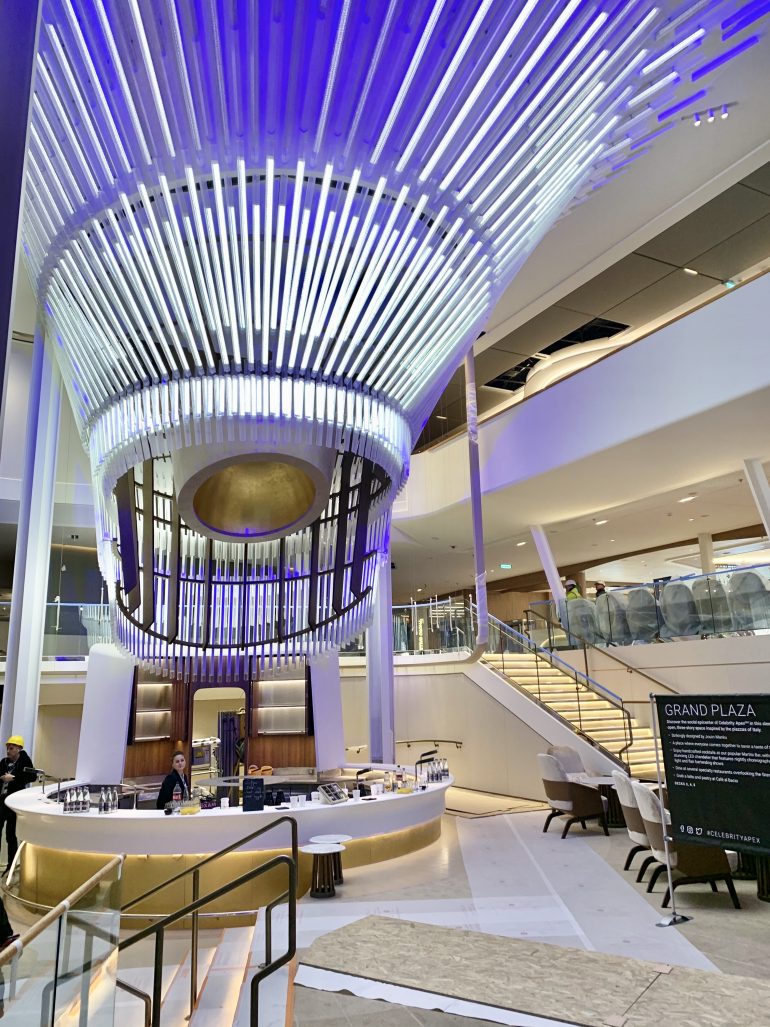
In the trilevel Grand Plaza area, the Martini Bar features over 700 LED lights in crystallized lenses designed to dance in coordinated fashion for dramatic effect. If lined up on the ground, these lights would span more than half a mile.
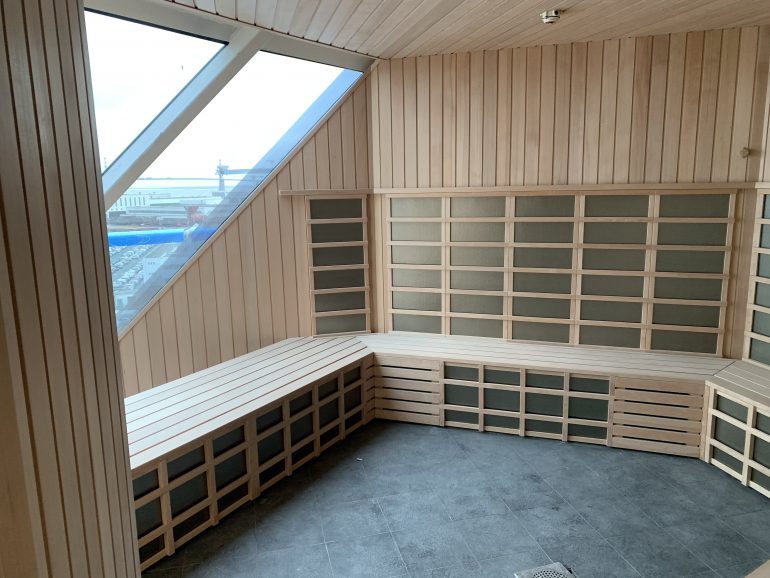
A Spa Thermal Suite adds eight different therapeutic experiences like a salt room, massaging Rainfall Water Therapy room, Iyashi Dome sauna (said to cleanse and detoxify the body), and new treatment tables. It also features the first F45 fitness classes at sea as well as a Kerastase Institute beauty salon.
Each of these elements requires significant plumbing and wiring design, which is different from the systematic approach found in cabins and must be integrated into the overall maze of pipes on the ship. The spa’s design, especially, requires unique setups for plumbing and piping.
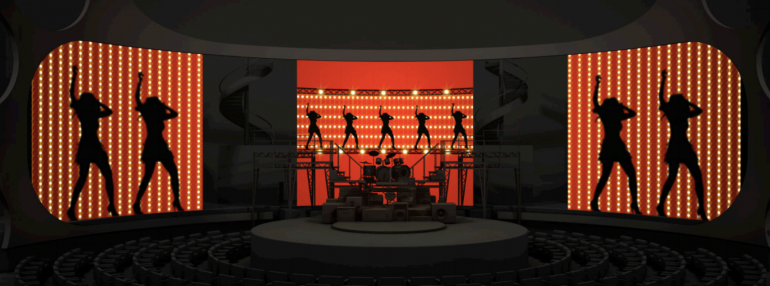
A 23-foot 4K LED screen curving around the main theater stage is fitted with laser projectors for wraparound lighting during stage shows.
And Eden, a combined dining and lounge space, features a canopy of leaves, which are more than decorative — they shield the view of electronic equipment and lighting.
» Learn more: I survived a cruise — and you can too
The bottom line
On this ship, I found everything seemed to fit together with precision and often served to function both for internal use and passenger appreciation.
The next time you travel aboard a new cruise ship, look closely to appreciate the myriad details that came together to create it.
Photos courtesy of Celebrity Cruises and Ramsey Qubein.
How to maximize your rewards
You want a travel credit card that prioritizes what’s important to you. Here are our picks for the best travel credit cards of 2024 , including those best for:
Flexibility, point transfers and a large bonus: Chase Sapphire Preferred® Card
No annual fee: Bank of America® Travel Rewards credit card
Flat-rate travel rewards: Capital One Venture Rewards Credit Card
Bonus travel rewards and high-end perks: Chase Sapphire Reserve®
Luxury perks: The Platinum Card® from American Express
Business travelers: Ink Business Preferred® Credit Card
Planning a trip? Check out these articles for more inspiration and advice: Find the best travel credit card for you How to get the best deal on your next cruise Your money-saving guide to vacations

on Chase's website
1x-5x 5x on travel purchased through Chase Travel℠, 3x on dining, select streaming services and online groceries, 2x on all other travel purchases, 1x on all other purchases.
60,000 Earn 60,000 bonus points after you spend $4,000 on purchases in the first 3 months from account opening. That's $750 when you redeem through Chase Travel℠.

on Bank of America's website
1.5x-2x Earn unlimited 2 points for every $1 spent on travel and dining purchases and unlimited 1.5 points for every $1 spent on all other purchases.
60,000 Receive 60,000 online bonus points - a $600 value - after you make at least $4,000 in purchases in the first 90 days of account opening.


Cruise Magnet
Cruise Tips And News
Cruise Ship Construction Locations: Where Are Cruise Ships Built?

What Is a Shipyard, particularly one that constructs cruise ships?
A shipyard is a facility where ships are constructed and repaired. Shipyards are typically located in areas with large bodies of water, such as oceans, rivers, and lakes. Cruise ships, specifically, are large vessels typically built in dry docks with the help of large cranes.
Constructing a cruise ship begins with the raw materials being brought to the shipyard. After that, the raw materials are cut, welded, and assembled into the ship’s frame. The frame is then covered with panels, and the interior is built out. After this, the engines and other systems are installed. Finally, the ship is painted and tested before it can be released to the sea.
Shipyards can also repair existing ships by performing maintenance on engines, electrical systems, air conditioning systems, and hulls. Shipyards are essential for the global maritime industry as they provide necessary repairs and construction for ships.
Largest Ship Builders in the World
Fincantieri.
Fincantieri is one of the world’s largest ship builders and are based in Italy. It is renowned for its expertise in designing and building vessels, from yachts to naval ships.
Founded in 1959 and based in Trieste, Italy, Fincantieri has grown to become one of the top shipbuilders in the world, with operations in the United States, Romania, Brazil, Norway, and other countries. With over 10,000 employees, the company has a reputation for quality and innovation.
Regarding cruise ships, Fincantieri has a long history of constructing vessels for some of the world’s most popular cruise lines. The company has built over 100 cruise ships since it first started production in the early 1990s. Some of their more recent projects include the launch of the MSC Seascape, as well as the construction of the Norwegian Prima.
The company has designed and built several custom-made vessels for some of the world’s top cruise line brands, such as Royal Caribbean International, Carnival, and Norwegian Cruise Line. Fincantieri builds approximately one-third of modern cruise ships.
Meyer-Werft
Meyer-Werft is one of the world’s leading shipbuilding companies and has been at the forefront of the cruise ship construction industry for decades. Based in Papenburg, Germany, Meyer-Werft has a long history of delivering innovative and quality ships to customers.
Meyer Werft is a major German shipyard founded in 1795 to build small wooden vessels. Nowadays, it has about 3300 employees and boasts the largest ship construction shed in the world.
It takes about 36 months to build a cruise ship. Many cruise ships, such as the Disney Treasure and Royal Caribbean’s Odyssey of the Seas have been constructed by Meyer Werft over the years, demonstrating their commitment to producing quality vessels.
STX-Europe is one of the leading designers and suppliers of cruise ships, creating some of the world’s most remarkable vessels for the marine industry. The company has over 130 years of experience delivering top-quality shipbuilding projects to customers worldwide. STX-Europe has constructed a variety of luxury cruise ships, including Royal Caribbean International’s Harmony and Oasis class ships, as well as vessels for AIDA Cruises, Princess Cruises, and Norwegian Cruise Line. Every ship they build is designed with customer comfort and safety while keeping up with modern technological advances.
The state-of-the-art facilities used by STX-Europe ensure that their designs are completed quickly and effectively; these premises allow them to construct vessels that exceed international standards.
Modular production line construction methods in cruise ship construction
Cruise ships are massive, complex vessels that take significant time and resources to construct. With so many pieces to assemble and intricate designs to create, modular production line construction methods are invaluable in building a cruise ship.
Modular production line construction involves constructing various components in a pre-defined order, in an assembly line style, which increases efficiency and speed in production. This construction method is used for many ships, including cruise ships.
The first step in constructing a cruise ship is to build the hull. This is the outermost layer of the ship that provides the necessary protection and structure to the vessel. The hull construction requires significant planning and precision, as this will be the base of the entire ship.
Once the hull is constructed, the next step in the modular production line construction process is manufacturing the ship’s cabins. These cabins are the individual rooms where passengers will stay during their cruise. Cruise ship cabins require significant interior design and construction, as they must be comfortable and attractive for passengers.
The final step in modular production line construction for a cruise ship is to construct the ship’s interior. This includes the galley, the hallways, and other common areas of the vessel. This process requires much attention to detail and careful planning to create a comfortable, inviting atmosphere for guests.
Are any cruise ships built in the U.S.?
Cruise ships are not built in the United States. This is due to a combination of labor costs, material costs, and regulations that make it difficult for cruise ship companies to build ships in the United States.
The first issue is labor costs. Building a cruise ship requires a lot of manpower and skilled labor. The cost of labor in the United States is much higher than in other parts of the world, which makes it challenging to build ships profitably in the U.S.
The second issue is material costs. The U.S. is not the most cost-effective place to buy the materials needed to build cruise ships. This is because the U.S. has higher taxes and regulations, which drive up the cost of materials.
The third issue is due to regulations such as The Merchant Marine Act of 1920. Commonly referred to as the “Jones Act,” only vessels that are registered in the United States may transport goods between two U.S. ports. Additionally, the act requires U.S. vessels to be constructed in the United States and operated by American citizens. This law was created to help ensure American shipping fleets remain competitive in the global market and that American shipbuilding, shipping, and boatbuilding jobs remain in the United States.
The Jones Act also significantly impacts the cruise ship industry, as many major cruise lines operate ships built in foreign countries. The law prevents the construction of new cruise ships in the United States, meaning that the industry must rely on foreign shipyards to make new vessels. It is a complex law and has a significant impact on the cruise ship industry. While it is designed to protect American shipping fleets and jobs, it also prevents cruise ships from being built in the United States and raises the cost of repairs and maintenance.
Cruise ships are built in specialized shipyards around the world. Several countries have shipbuilding industries that specialize in constructing large ships, including those in the cruise industry. While some shipyards are located in the United States, none are used for cruise ship construction. Instead, most of these ships are built in countries like Italy, Germany, Finland, and France. Each country’s shipyards feature advanced construction techniques and technologies that enable them to construct high-quality vessels. Ultimately, the global shipbuilding industry is responsible for creating the beautiful and luxurious vessels that sail millions of people every year.

How Do Cruise Ships Stay Stable At Sea?
Ever wondered how a massive structure like a cruise ship doesn’t tip over even though having a huge volume outside of the water compared to what’s below the water?
So, the answer to this question is balancing the forces. Let’s say we have two main forces acting on the hull, one is the weight of the vessel that pushes it down and the second is the buoyancy force that acts on the bottom of the hull that pushes it up.
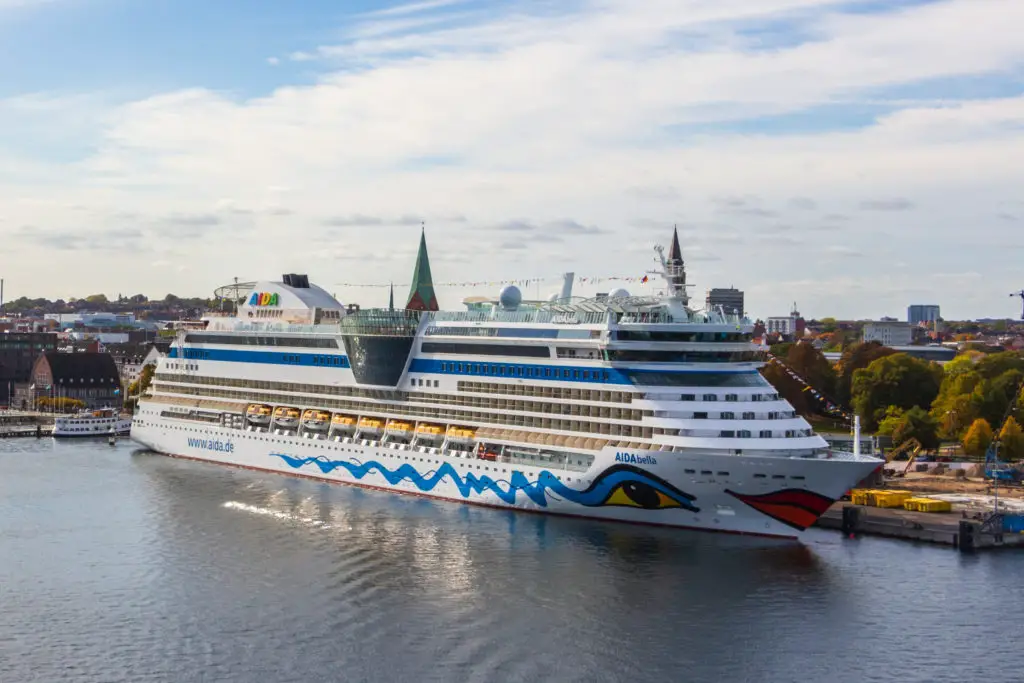
How Does A Cruise Ship Float?
When both forces balance with each other the vessel is stable and remains afloat. Now, these forces act on certain points in the ship called the center of gravity, where the weight acts, and the center of buoyancy, where the buoyancy or upward forces act on.
Now since all the heavy machinery on board like engines, generators, and so on are placed on the lower levels in the vessel compared to lighter materials which take up spaces like cabins, furniture, entertainment spaces, and so on, are mostly found on the upper levels or decks in a vessel, the center of gravity will be located towards the bottom half of the vessel.
Whereas the center of buoyancy is found to be acting below the water surface on the submerged section of the hull and is defined as the center of the waterplane area which is almost half of the submerged section.
Let’s suppose an external force like wind acts on the side of the vessel, the vessel tends to heel towards one side and while doing so the amount of body submerged inside the water also changes, bringing forward a shift in the center of buoyancy of the vessel whereas the center of gravity remains unchanged.
In stable conditions the center of gravity is aligned with the center of buoyancy in a single vertical plane, whereas in unstable conditions like the one described above, the center of gravity and center of buoyancy will be not aligned on the same plane which thereby causing a twisting moment which tends to bring back the vessel to its stable upright condition, once the wind is over.
Now if there is a shift of weight within the vessel, the center of gravity changes and again a twisting moment is produced if the center of gravity aligns with the center of buoyancy again the vessel remains stable but with an angle of heel, and this condition can be correct by balancing the weights on-board.
Ship stability is divided into, Intact stability and damaged stability. Intact stability determines the vessel’s ability to stay afloat in all operational and weather conditions. Whereas damage stability determines the vessel’s ability to stay afloat such that safe evacuation procedures can be carried out, during collision or grounding of the vessel.
Let’s get into the details to find out more.
How Are Cruise Ships Designed In Terms Of Stability?
The stability of a cruise ship is not only depends on its geometry but also on how the structures are arranged inside the vessel to help it stay afloat during undesired events such as flooding due to collision or grounding of the vessel.
In cases of flooding, water-tight compartments and water-tight bulkheads help in retaining water in specific spaces inside the vessel, thereby increasing the reserve buoyancy of the vessel and not causing it to spread throughout the vessel which can ultimately cause sinkage.
Looking back into history, one of the main reasons why the world’s biggest passenger ship , The Titanic sank was the absence of watertight bulkheads.
Classification Societies
All the new build designs are governed by a regulatory body called IACS (International Association of Classification Society), which has put forward a set of safety standards that must be met by the designer/builder during the entire shipbuilding process .
All vessels are designed so they operate in certain sea states and the standards have a high safety margin in terms of adverse weather conditions the vessel may ply through during her operational life. Also starting from the design stage till the final launching and sea trials there are regular class survey’s done by surveyors under the classification society to ensure the standards are maintained.
They also verify the structural strength and integrity of components of the hull to ensure the safe operation of the vessel. Also, periodical surveys are done to check if a vessel is properly maintained in compliance with class requirements throughout its operational life to ensure the overall safety of life on board the vessel.
Inclining Test
Near to completion of a vessel, an inclining test is carried out to assess the stability of the vessel. The primary aim of the experiment is to find the center of gravity, and the metacentric height (used as an indicator of stability), and further estimate the stability of the vessel.
This test involves shifting weights within the vessel so that the vessel’s heel is to one side, the corresponding heel angle is marked with help of devices such as a pendulum or stylograph, and computations are made to get the above-mentioned values and this is repeated for different heel angles.
The inclining test is not only done for new builds, but also for vessels that have undergone a huge change in their overall weight for example refit of the superstructure and so on.
Also, to abide by safety standards classification societies have brought forward a rule where all vessels must be weighed over a period of 5 years to ensure that the vessels are lightweight (that is the weight of the vessel without any cargo, fuel, passengers, and so on, onboard) haven’t changed.
If there’s a noticeable increase higher than 2% an inclining test must be done so as to assess the stability of the vessel because when there’s a change in lightweight the position of the center of gravity also changes which can affect the stability of the vessel.
Cruise Ship Stability Systems Onboard
Back in the day, vessels were stabilized by adding more weight/ballast on the lower sections so as an effort to bring down the values of the center of gravity. Not only does this add more weight overall but also required more power to push this weight, which thereby increased fuel consumption and reduces range.
Understanding this was not a feasible way forward, designers started thinking of other means by which they could achieve a more stable vessel and one of them was by improving the values of metacentric height.
The absence of a completely filled tank gave rise to the free surface effect which had a direct relation to metacentric height and methods were adapted to reduce this effect by compartmentalizing the tanks.
Again, the overall effects were observed to be very small and other systems were developed which proved to be more effective.
Degrees Of Freedom
A ship normally has a motion in 6 degrees of freedom out of which 3 are translational and 3 are rotational. The translational motions are, a surge which is the forward and aft motion of the ship, sway which is the port to starboard motion, and heave which is the up-down motion.
The rotational motions are roll, motion with respect to the longitudinal axis towards port and starboard, Pitch which is the motion about the transversal axis forward and aft, and yaw which is a swing motion about a vertical axis.
Stabilizer systems are used to dampen these motions which can lead to travel discomfort problems like seasickness for passengers and crew onboard the vessel.
Based on the source of energy utilized to stabilize a vessel, the systems can be divided into active and passive stabilizers. Passive stabilizers are those which may work utilizing energy from the ship’s motion and they can either be fixed or mobile whereas Active stabilizers are those which are linked to cruise ships’ internal means and require power to operate which can be either electrical or hydraulic.
Do Cruise Ships Have Stabilizers?
In order to reduce rolling at sea and improve the experience of passengers onboard, cruise ships are equipped with stabilizers. However, it is a more complex system and includes both passive and active stabilizers.
Passive Stabilizers:
- Bilge Keels
Bilge keels are normally plates welded to the hull and are located in such a way that they create an obstacle to the water flow generated during roll motion, thereby producing a damping motion that reduces roll.
They are the most common stabilization systems used on most vessels and are effective at all speeds. Also, they do not require much maintenance as they are fixed structures.
- Passive tanks
Passive tanks are tanks that are designed inside the vessel and they use ballast water to add and discharge weight as a means of counteracting the roll motion. If designed correctly, flow motions inside the tanks due to roll act as a damping force.
It is highly effective at slower speeds and since there is no additional structure protruding out of the vessel there are no additional drag forces created on the hull making it more efficient.
Active Stabilizers:
- Fin stabilizer
Stabilizer fins are the most common active stabilizers. They are movable lifting surfaces and are free to rotate about an axis. Its motion is governed by sensors to counteract external forces.
- Gyro stabilizer
A gyroscope is a device that has a wheel-shaped structure in a box that can spin at very high speeds about its own axis. They produce a moment that can oppose the external forces thereby stabilizing the entire vessels.
Some vessels use two or more stabilizers depending on the size of the vessel. They are effective at all speeds and also when the vessel is at rest.
The autopilot system uses electronic signals to control the rudder of the vessel. They can help the vessel keep a steady course without any other external forces acting on the vessel which could lead to a change in course.
They are used to stabilize the vertical motions in a vessel. They work in a similar manner to fin stabilizers and are usually retractable so as to reduce drag and also so that the vessel could easily maneuver through shallower water without the risk of grounding.
Is It Safe To Take My Family On A Cruise Ship?
Yes, it is totally safe to go out with your family to the sea and have a great time on a cruise ship, as modern vessels are designed and built in such a way, strictly adhering to all safety measures and protocols. They are also maintained and surveyed periodically to ensure the overall safety of life on board and also are equipped with the latest life-saving appliances such as boats and rafts for undesired events.

About the author
I worked as an officer in the deck department on various types of vessels, including oil and chemical tankers, LPG carriers, and even reefer and TSHD in the early years. Currently employed as Marine Surveyor carrying cargo, draft, bunker, and warranty survey.
Leave a Reply Cancel reply
Your email address will not be published. Required fields are marked *
Save my name, email, and website in this browser for the next time I comment.
Latest posts
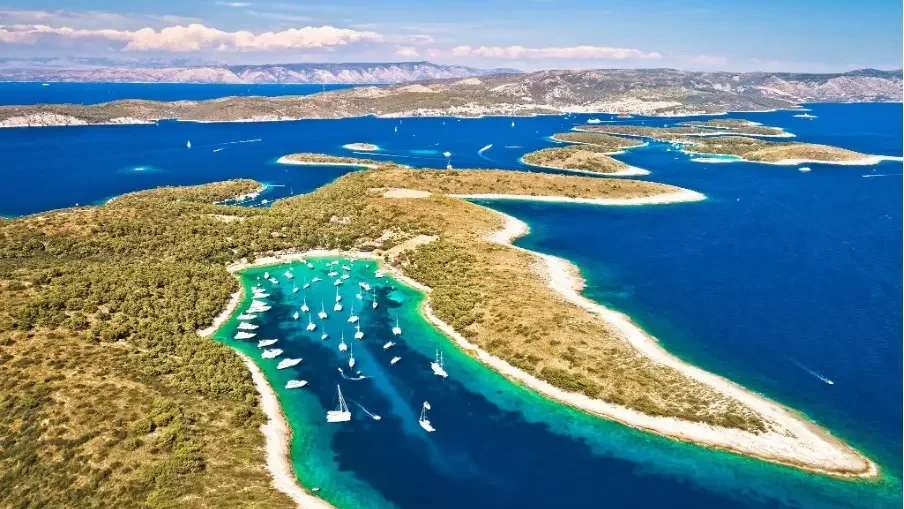
Sustainable and Luxurious: Discovering Split’s Yachting Paradise
Split, the Adriatic jewel, offers a yachting paradise where history meets pristine maritime beauty. Here, to rent a yacht means unlocking the gateway to exploring secluded bays, experiencing cultural heritage […]
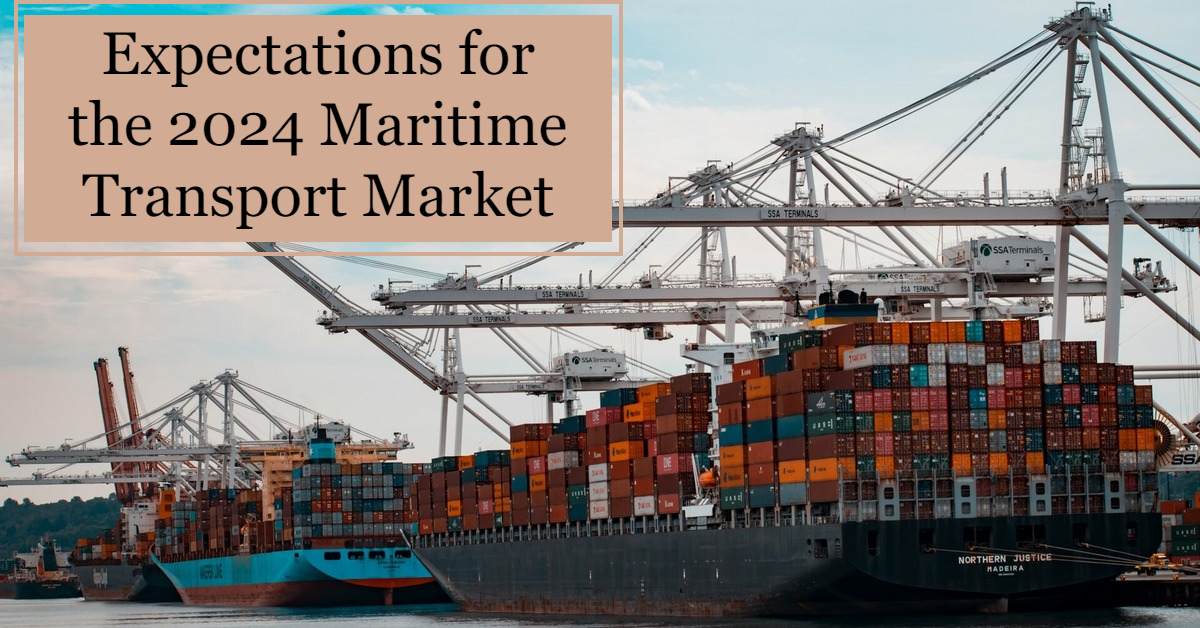
Expectations for the 2024 Maritime Transport Market
What does the 2024 maritime transport market look like? International events have disrupted supply chains and changing regulations keep industry leaders on their toes.
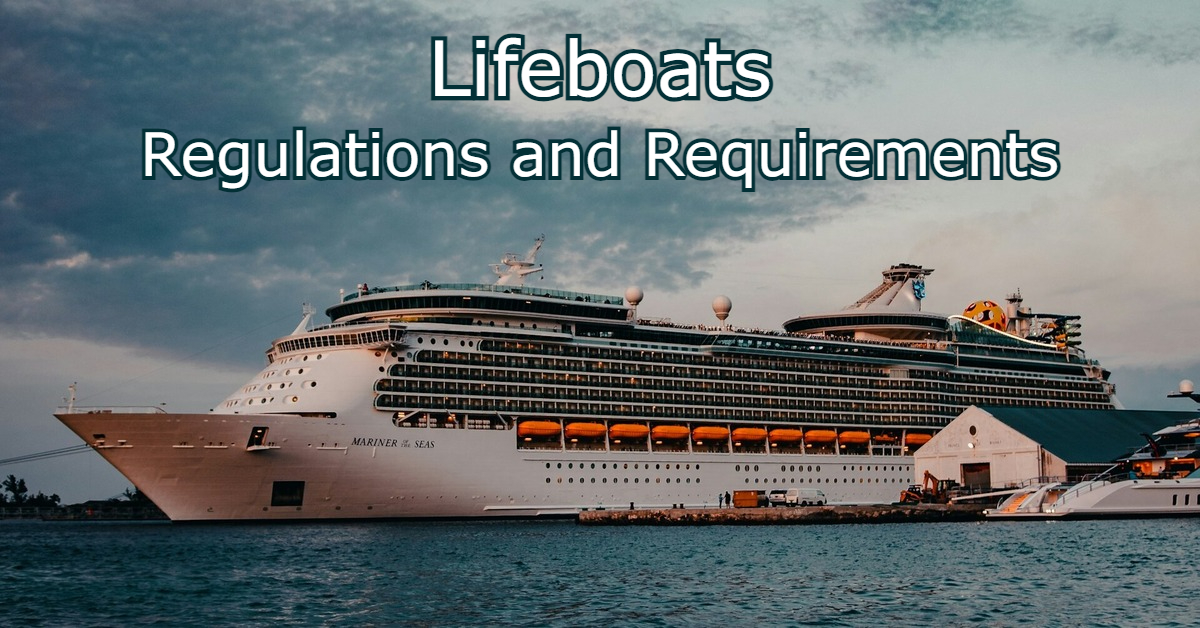
Lifeboats: Regulations and Requirements
In an emergency, portable vessels called lifeboats will get a ship’s occupants to relative safety. So how do lifeboats work?

Engineering Department Onboard Cruise Ships – A Detailed Guide
What comes to mind when we hear the word “ Cruise Ship ”?
Big, behemoth and beautiful seagoing vessels which resemble floating hotels, giant casinos, or floating theme parks?
Well, as glamorous as they may seem from the outside, a lot of discipline, punctuality & hard work goes into providing a unique experience of luxury, quality, comfort, fun, relaxation, safety & security for guests vacationing on them.
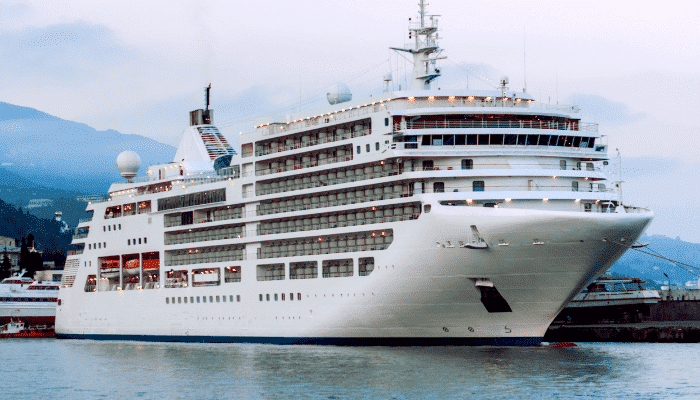
Many crew members work long shifts, putting in hours of hard work along with dedication, efficiency and attention to detail to ensure that guest needs are attended to as quickly as possible and that they only have the best experiences and the happiest memories of their limited time onboard.
An average-sized cruise ship typically has a passenger capacity of around 2000-2500 and a crew complement of 600-1000, which is predominantly divided amongst the following departments, viz., Deck, Engineering, Food & Beverage, Housekeeping, Sanitation, Guest Services, Laundry, Spa, Medical, Entertainment, Photography, Merchandise, IT, HR, Shore Excursions , Cruise Staff and Youth/Children’s activities.
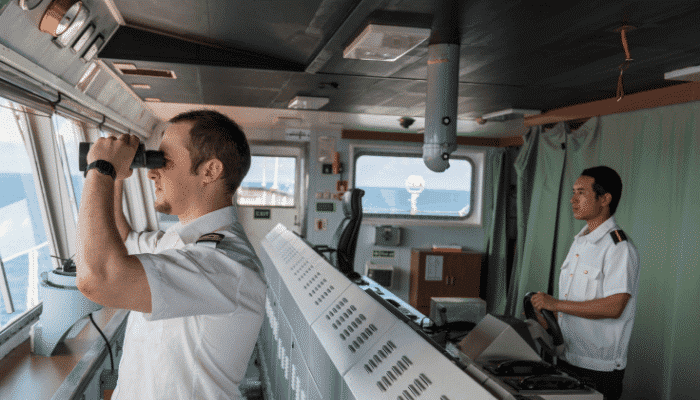
Let me give a brief introduction of the roles and responsibilities of the various departments on board.
The Deck department is headed by the captain and has command of the ship. Safety, Security and Environmental departments also come under their purview.
They are also responsible for drills related to safety, security, pollution prevention and also related shipboard training of the crew-members.
In some companies, the carpentry and upholstery department also come under the Deck department.
The food and Beverage department , as the name suggests comprises everything that is food-related or culinary in nature. All the restaurants, galleys, chefs, stewards, bakery and bar department come under it.
The housekeeping department takes care of the upkeep of the guest & officer cabins and public spaces onboard whereas the sanitation department ensures that all the shipboard areas are sanitized and germ/infection-free.
The laundry department handles the clothes and linen of the entire ship and the Spa department offers personal care, grooming and wellness services for the passengers. In many cruise lines, these can also be availed by senior officers.
Food and Beverage, Housekeeping, Sanitation, Laundry and Spa all have their assigned managers who report to the Hotel Director, who is the overall in charge of all Hotel operations, of which these departments are part.
Entertainment, Photography, Merchandise, Shore Excursions, Guest Services, Cruise staff and Youth/Children’s activities departments come under the purview of the Cruise Director.
While Entertainment is responsible for casinos, stage shows, theatre screenings, stage & theatre technicians and equipment, the Photography department, as the name suggests, helps the guests to capture their precious moments onboard as photographs and make lasting memories through them with family & friends, while enjoying various activities and events.
The merchandise department is in charge of all the retail shops onboard which sell exotic items and articles such as jewellery, goodies and memorabilia to guests. They also run crew shops onboard which sell articles of everyday use and utility to crew-members, such as toiletry items, medicines and snacks.
Shore Excursions department’s job is to make the shore-side trips of the guests to exotic destinations at various ports of call, as easy, fun, safe, adventure-filled, inexpensive and entertaining as possible.
Cruise staff focuses on fun activities, trivia, games & competitions for the guests and crew alike, whereas Youth and Children’s activities focus specifically on youth and children’s entertainment and even provides day-care services for children, especially toddlers.
The guest services department is the interface between the guests and the ship staff/crew. Their job is similar to the job of the hotel front desk or reception. Any service requests such as cabin service requests as well as complaints such as a leaky cabin faucet etc. are made by the guests through them.
It is their duty to take these requests and/or complaints and pass them on to the concerned departments for action/rectification, provide feedback to the guests and assist them with any further follow-ups if required.
All the above have their specific line managers who report to the Cruise Director. The roles and responsibilities of some departments though can vary slightly from company to company.
In addition to the above departments, Medical, Information Technology and Human Resource are independent departments who have their own heads and report directly to the captain and the company.
The Medical department typically has 3 to 4 doctors and a similar number of nurses who work in shifts. It is headed by a senior doctor. They cater to both passengers and crew requiring medical assistance, at separate timings during the day. They are also the first responders for any medical emergency onboard.
The Information Technology department is responsible for all the computers, servers, programming, LAN, Ethernet, Wi-Fi, related hardware and software on board. Any network-related maintenance and troubleshooting onboard are carried out by them.
The Human Resource department is responsible for the orientation and familiarization training of new employees. They are also responsible for crew training pertaining to company culture and tradition, policies, leadership skills and management. Any conflicts and complaints onboard, inter-departmental as well as intra-departmental, are handled by the HR department, in conjunction with other departments. Final decisions with regards to re-employment and termination of crew members are taken by the HR department, once again after consultation with other concerned departments.
The Engineering Department Of Cruise Ship

After a brief introduction to the roles and responsibilities of various departments onboard cruise ships, let us now focus on the main topic of our discussion in this article, the Engineering department , which covers all the technical & environmental operations of the vessel.
This department is headed by the Chief Engineer. The Staff Chief Engineer, Hotel Services Engineer, HVAC Engineer & the Chief Electrician, who are in charge of different engineering subdivisions, report to the Chief Engineer.
These subdivisions are – Main Plant & Environmental Engineering, Hotel Engineering, HVAC & Electrical/Electronics.
Let us look into each: –
Main Plant & Environmental Engineering
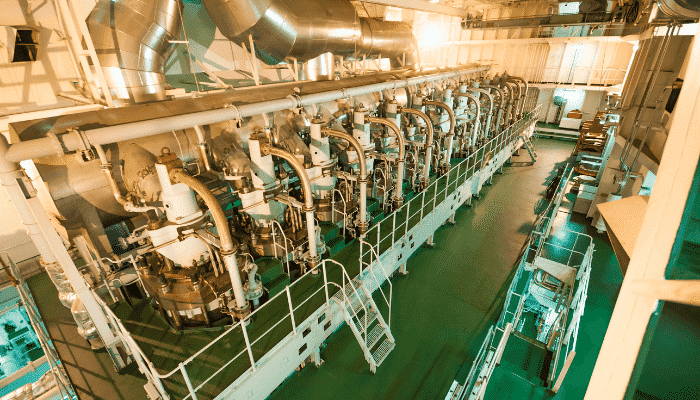
This subdivision is headed by the Staff Chief Engineer who, in turn, is subordinated by the senior watchkeepers (2nd Engineers), the First Engineer and the Environmental Engineer.
There are usually three watchkeeping teams, each headed by a senior watchkeeper and comprising of junior watchkeepers (3rd or 4th Engineers) and a motorman.
On cruise ships, there are thousands of guests on board at any given time and there could be guest complaints requiring the immediate attention of the technical department, at any time of the day or night, such as a vacuum toilet not working, a leaky shower or a broken sprinkler head etc.
The engine control room acts as not only a control centre for engine-room machinery but also as a communications centre where all the complaints/malfunctions or incidents related to technical equipment are communicated by other departments at any time as they occur.
In the above cases, it is the job of the senior watchkeepers who man the engine control room to attend such calls and communicate the concerns/complaints to the concerned in-charges, within the Engineering department.
Any hotel equipment related complaints, leaky cabin faucets or sprinkler heads, malfunctioning vacuum toilets to the Hotel department, any electrical equipment malfunctions to the Chief Electrical engineer and any AC/ ventilation related complaints to the HVAC engineer.
Therefore, unlike many cargo ships, the engine control room cannot at any moment, be left unmanned in UMS mode. The watchkeeping teams ensure that the engine room and the engine control room are manned 24 hours.
Each watchkeeping team also has certain assigned machinery under their responsibility. For example, one watch may be responsible for fuel oil system and purifiers, another may be assigned boiler & compressors, and the third may be in charge of freshwater generators and water treatment.
It is their responsibility to carry out maintenance as per PMS on their assigned equipment every day, in addition to their watchkeeping responsibilities.
This, in turn, is carried out ensuring that at no time the maintenance work affects the efficiency of watchkeeping duties. For any complicated maintenance requiring more time and manpower, they are provided assistance by the main plant team.
The First Engineer heads the main plant team and is the overall in-charge of engine-room machinery. He has a team of mechanics, fitters and wipers under him who help him in carrying out routine maintenance and overhauls of engine-room machinery.
All maintenance activities on the main diesel generators, engine-room pumps, heat exchangers, major repairs on boilers, preparation for boiler surveys, bunkering and any pipeline modifications/repairs within machinery spaces are handled by the main plant team.
The Environmental Engineer is responsible for the wastewater treatment plant and garbage-handling equipment and has designated motormen under him.
The sewage treatment plant and related pumps and equipment, black water units, screen presses, incinerators and food waste processing equipment come under his KRA.
Hotel Engineering
It is the name given to the subdivision of the Engineering department which deals with all the machinery that are not part of engine-room operations.
The Hotel Services Engineer helms it and is supported by assistant hotel service engineers, plumbers, fitters and a water technician.
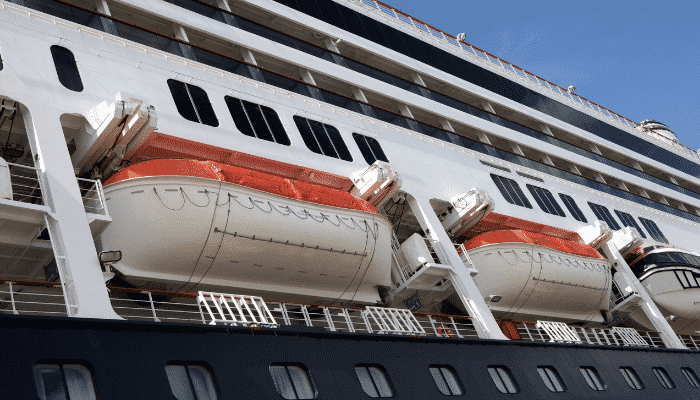
Their responsibilities include safety equipment such as lifeboats & davits, sprinkler system, hydraulic side-shell doors, watertight doors , vacuum toilets, freshwater distribution lines in the accommodation and hotel machinery such as coffee-makers, ice-cream vending machines etc.
They are also responsible for chlorination and maintenance of all the swimming pools on board and in some companies, also for potable water treatment and chlorination. This is handled exclusively by the water technician who reports to the Hotel services engineer.
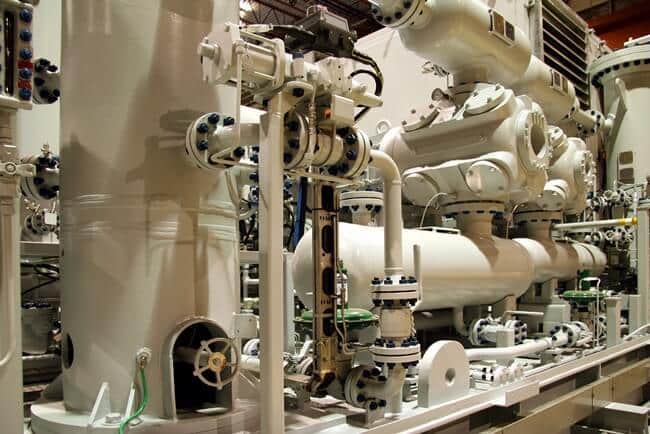
HVAC stands for Heating, Ventilation and Air-Conditioning. It is helmed by the Chief AC Engineer, and he, in turn, is assisted by Assistant AC Engineers, AC Technicians, fitters and wipers.
Their areas of responsibilities pertain to the operation and maintenance of the main AC Chillers, which provide air conditioning all over the ship, Air handling Units, Ventilation fans, Refrigeration Machinery, Cold rooms, Chilled & heated water system and related heat exchangers.
Electrical Department

It is helmed by the Chief Electrical Engineer, who is sub-ordinated by the First electrician, Electronics engineer, 2nd electricians and assistant electricians.
It is one department that has a large scope of work as electrical installations and equipment are everywhere on the ship, many of them requiring everyday checks and maintenance, both regular and breakdown.
Almost all passenger vessels have high voltage installations, mostly 6.6 kV or 11 kV. This is because, since current demand is high, a higher voltage is adopted so that conductor size, and consequently electrical losses, can be reduced.
The high voltage switchboards require special training and procedures, with regards to electrical safety, which cruise ship electricians are equipped and certified with.
They are also responsible for electrical propulsion systems, which propel most cruise ships, related transformers and converters.
Therefore, as we saw, from propelling the ship to wonderful destinations, providing power to the entire ship, maintaining passenger comfort and hygiene whilst ensuring that they have uninterrupted enjoyment onboard and complying strictly with safety and pollution prevention regulations, the diverse roles and responsibilities that the Engineering department takes up, makes them critical for cruise ship operations.
You might also like to read:
- Top 10 Most Expensive Cruise Ships in 2021
- A List of Unique and Interesting Marine Careers
- 50 Marine Careers Essential Guide
- What is Naval Architecture: Careers, Courses And Jobs For Naval Architects
- A Career in Logistics: A Detailed Guide
Disclaimer : The information contained in this website is for general information purposes only. While we endeavour to keep the information up to date and correct, we make no representations or warranties of any kind, express or implied, about the completeness, accuracy, reliability, suitability or availability with respect to the website or the information, products, services, or related graphics contained on the website for any purpose. Any reliance you place on such information is therefore strictly at your own risk.
In no event will we be liable for any loss or damage including without limitation, indirect or consequential loss or damage, or any loss or damage whatsoever arising from loss of data or profits arising out of, or in connection with, the use of this website.
Do you have info to share with us ? Suggest a correction

Related Posts
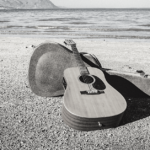
Subscribe To Our Newsletters
By subscribing, you agree to our Privacy Policy and may receive occasional deal communications; you can unsubscribe anytime.
Latest Life At Sea Articles You Would Like :
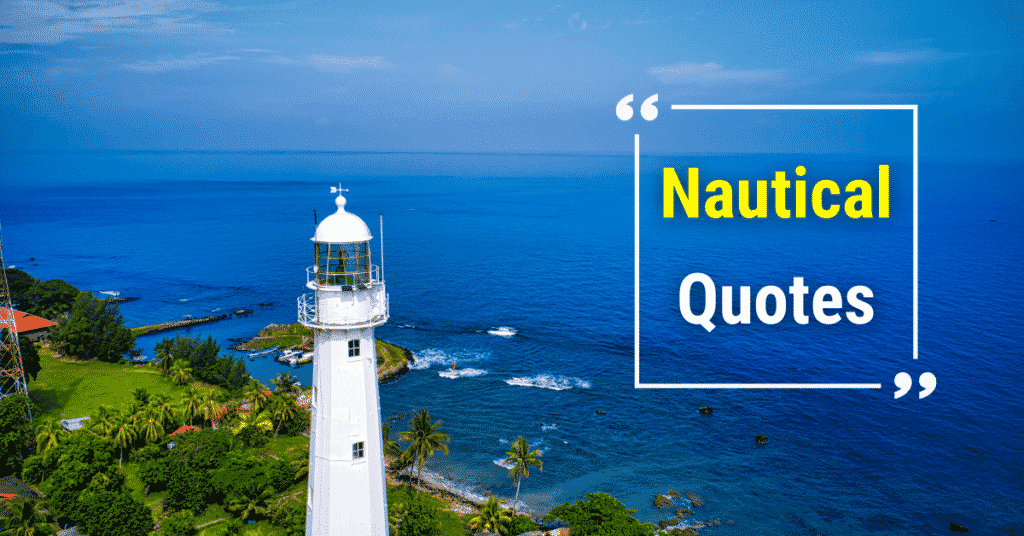
Top 10 Inspirational Nautical Quotes Of All Time

How Internet on Ship has Improved the Life of Seafarers On Board Ships?
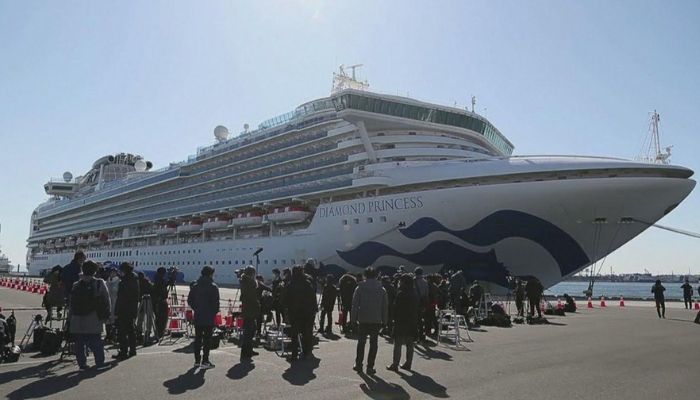
Cruise Ships: What Has Changed Post-Pandemic?

13 Things Sailors Must Keep in Mind About Their Sea Job Contract
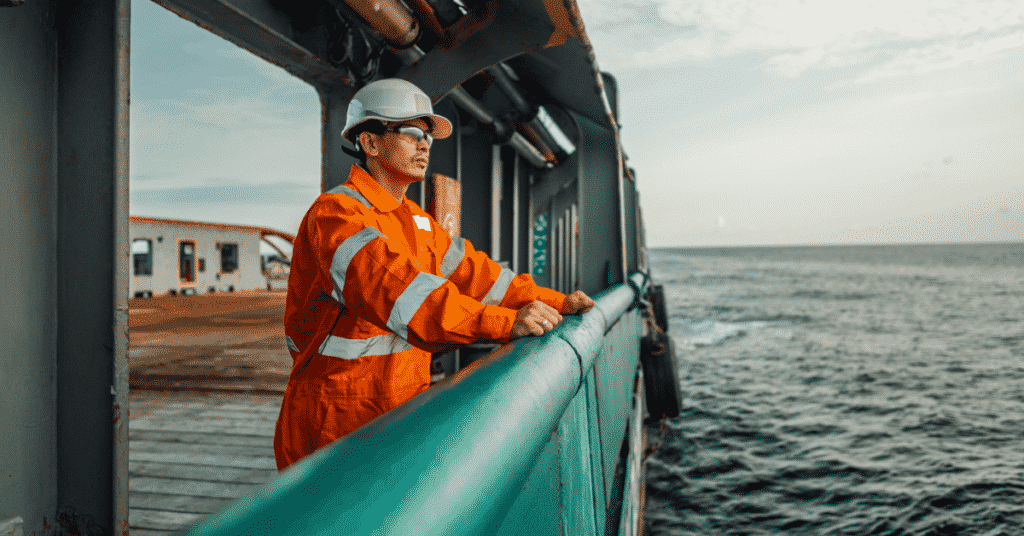
How to Cope With Emergencies at Home While You Are Sailing?
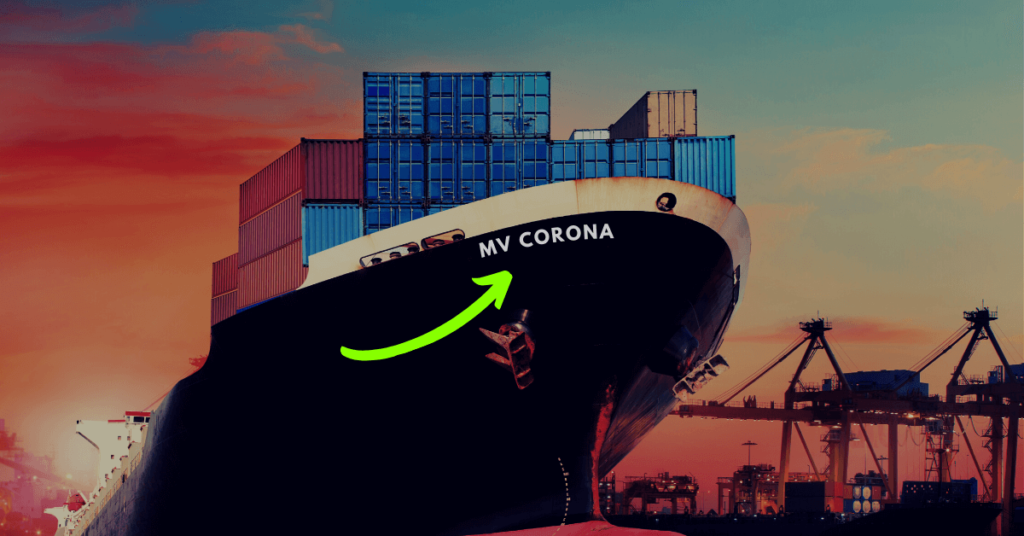
How Are Ships Named – Naming and Launching Ceremony
Leave a reply.
Your email address will not be published. Required fields are marked *
Subscribe to Marine Insight Daily Newsletter
" * " indicates required fields

Marine Engineering
Marine Engine Air Compressor Marine Boiler Oily Water Separator Marine Electrical Ship Generator Ship Stabilizer
Nautical Science
Mooring Bridge Watchkeeping Ship Manoeuvring Nautical Charts Anchoring Nautical Equipment Shipboard Guidelines
Explore
Free Maritime eBooks Premium Maritime eBooks Marine Safety Financial Planning Marine Careers Maritime Law Ship Dry Dock
Shipping News Maritime Reports Videos Maritime Piracy Offshore Safety Of Life At Sea (SOLAS) MARPOL
This is the announcement bar for Poornima to test the Close Button. It will expire May 31 2024.
- Pre-Cruise FAQ
- Onboard FAQ
- Post-Cruise FAQ
- Cruisetours FAQ
- Special Offers Sign Up
- Cruise Deals
You have been logged out
Your window will update in 5 secs
Learn About Our Cruise Ships
Tour our vessels, from staterooms to public venues.
Readers' Choice Awards: Top Large Ship Cruise Lines
Condé Nast Traveler 2011-2014
Every Princess ship is a destination in itself with wide-ranging amenities, elevated culinary experiences and delightful activities. Below you'll find the deck plans, stateroom details, ship dining information and more for every vessel in our fleet. Visit the links, and get to know what we offer and what makes the Princess experience unique.
The Princess Fleet
Caribbean Princess
Coral Princess
Crown Princess
Diamond Princess
Discovery Princess
Emerald Princess
Enchanted Princess
Grand Princess
Island Princess
Majestic Princess
Regal Princess
Royal Princess
Ruby Princess
Sapphire Princess
Sky Princess
Star Princess — New Ship
Sun Princess — New Ship
Experience Reserve Collection Mini-Suites
For elevated luxury and convenience, book one of our new Reserve Collection Mini-Suites. Along with priority services and enhanced amenities, you’ll be among the first to experience our new Princess Luxury Bed. And you’ll enjoy the private seating, special menus and other exclusive benefits of Reserve Dining. Learn more about Reserve Collection Mini-Suites
Signature Features and Activities
What's new on board.
Take a peek at our latest offerings
Food & Dining
Award-winning and made from scratch
Entertainment
Movies, music, magic, comedy and more
Enriching Activities
Relaxing days & enriching experiences
Kids, Teens and Families
Discover and reconnect with activities for the whole family
Cruise Ports & Excursions
Fantastic adventures ashore await you
Celebrations & Gifts
Unforgettable Celebrations at Sea
Revitalize from head to toe
Destinations
Sail to almost anyplace you can dream of
4 types of Celebrity Cruises ships, explained

Of the seven big cruise lines that account for the majority of cruises taken by North Americans, Celebrity Cruises has one of the simplest fleets.
At the core of the brand are 12 relatively big ships that can be bunched into just three groups.
For more cruise guides, news and tips, sign up for TPG's cruise newsletter.
Each of these groups — known as "classes" in cruise industry lingo — is made of ships that were constructed around the same time with the same basic design. If you know one member of the group, you know them all.
In addition, Celebrity operates three very small vessels in the Galápagos that, together, make up a fourth grouping of vessels. As we'll explain below, these three vessels are far different than the line's 12 main ships and constitute what is, in effect, a separate business for the brand.
An introduction to Celebrity Cruises ships
For years, Celebrity has been one of the cruise industry's great innovators when it comes to new cruise vessels.
The line's three new Edge Class ships are widely heralded as three of the most innovative cruise ships at sea. They offer such groundbreaking features as cabins with glass walls facing the sea that open at the top to create a balcony-like feel and "Magic Carpet" platforms on their exteriors that move up and down for a variety of uses.
The Edge Class ships are just the latest vessels at the line to break ground when it comes to innovation.
The line's somewhat older Solstice Class ships also offer a number of features that were groundbreaking in their time and — in many cases — remain rare and alluring more than a decade after they first debuted.
Carrying about 2,000 to 3,000 passengers apiece, Celebrity's 13 main vessels are large but not giant by today's standards. At around 91,000 to 141,000 tons, they're nowhere near as big as the giant ships operated by Royal Caribbean , MSC Cruises and Norwegian Cruise Line .
The line's three Galápagos-based vessels are downright tiny, as they have to be to operate in the Galápagos. The government of Ecuador, which controls the archipelago, does not allow cruise vessels that carry more than 100 passengers to operate in the destination.
Related: The ultimate guide to Celebrity Cruises
Celebrity's three Galápagos-based vessels carry just 16 to 100 passengers each.
In general, Celebrity's biggest and most amenity-packed ships are its newest ships. If you're looking for a cruise experience with the most possible onboard activities and venues, you'll want to steer toward the vessels in Celebrity's Edge and Solstice Classes.
If cruising in a more intimate environment is your preference, you'll want to look at Celebrity's older Millennium Class ships, which are significantly smaller than the Edge and Solstice Class ships.
The three small Galápagos-based vessels are the vessels you want if you're itching to see the famously wildlife-filled islands.
Compared to such cruise operators as Carnival Cruise Line , which has eight different classes of vessels , Celebrity has a relatively easy-to-understand fleet.
Ships in class: Celebrity Ascent (2023), Celebrity Beyond (2022), Celebrity Apex (2020), Celebrity Edge (2018).
Size: 130,818 to 141,420 tons.
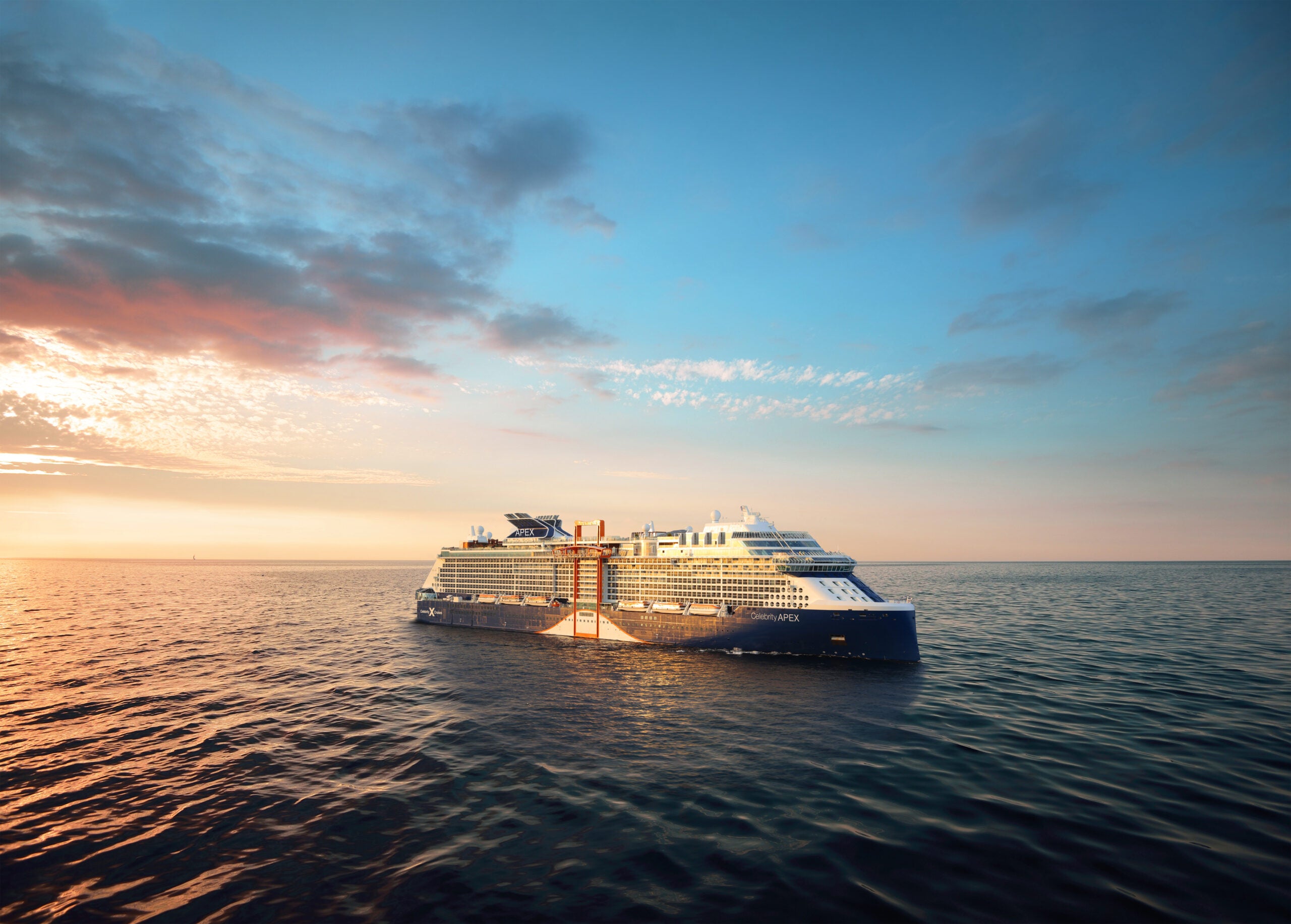
If you're in the "newer is better" camp when it comes to cruise ships, this is the Celebrity ship class for you. Celebrity's Edge Class just began rolling out in 2018, and the four vessels in the series that have debuted so far are the most advanced vessels in the Celebrity fleet.
They might also be the most advanced vessels in any cruise fleet.
Designed to carry 2,908 to 3,260 passengers apiece at double occupancy, the four vessels — Celebrity Ascent, Celebrity Beyond, Celebrity Apex and Celebrity Edge — each boast such innovative new features as "Infinite Veranda" cabins with outward-facing walls that are entirely made of glass.
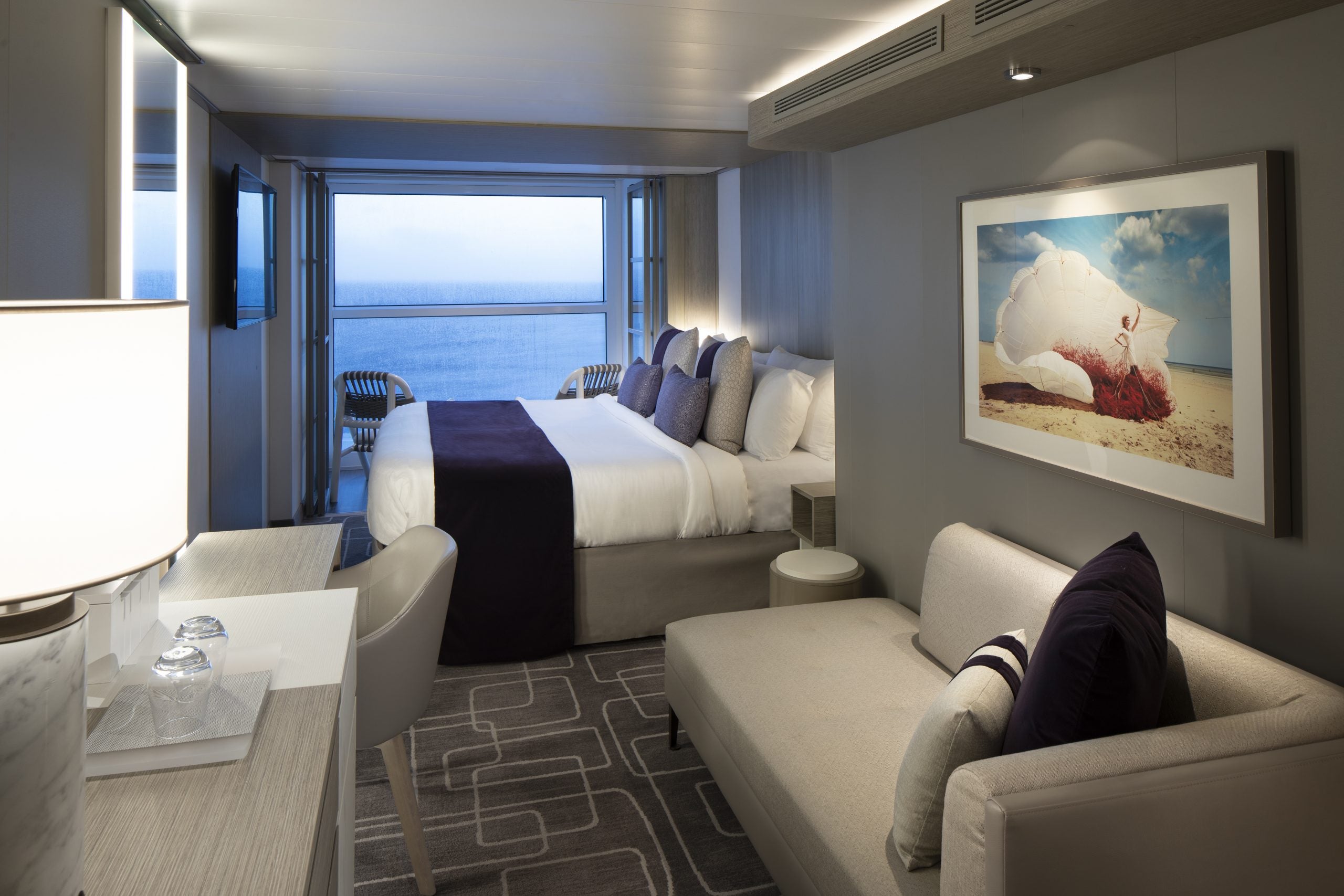
Billed as an industry first, the new glass-walled cabins were made possible by a rethinking of the way the load-bearing walls of cruise ships are constructed.
Notably, the top of the glass wall in the cabins slides down at the flick of a switch to create a balcony-like area — an innovation that, until recently, only had been seen with cabins on river cruise ships. The balcony-like area can be closed off from the rest of the cabin by shutting bifold doors.
Another innovative feature of the Edge Class ships is their 90-ton platforms the size of a tennis court that are cantilevered over the side of the vessel and used for all sorts of functions.
Related: Everything to know about Celebrity cabins and suites
Dubbed Magic Carpets, the platforms (there is one per ship) move up and down to serve as everything from tender boat boarding areas to 90-seat alternative restaurants.
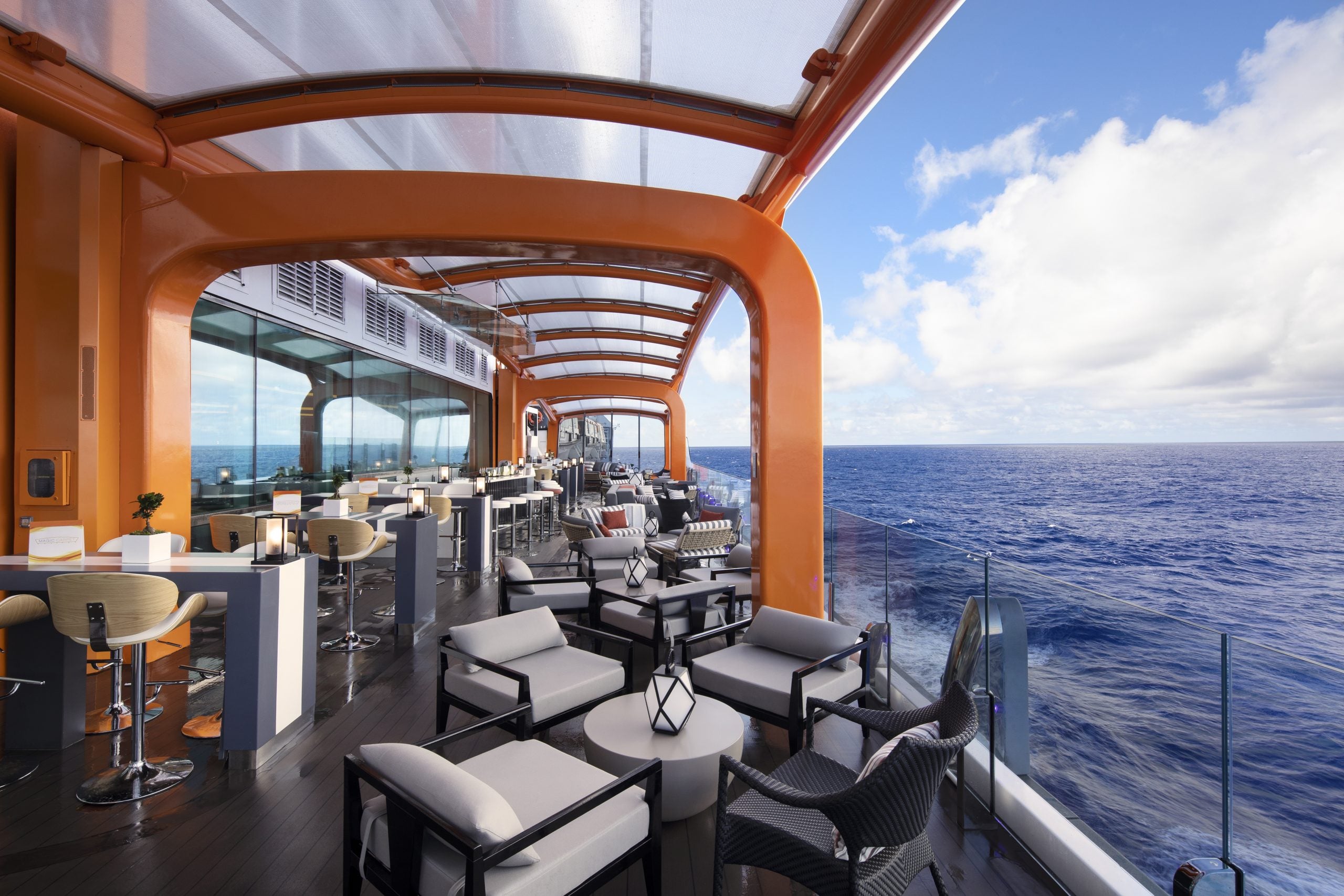
Among other unusual features, the Edge Class ships have top deck plant-filled "playscapes" called the Rooftop Garden with an outdoor eatery called the Rooftop Garden Grill. Inspired by childhood playgrounds, they're designed to "awaken the inner-child in everyone," the line has said.
The ships also offer unusual, glass-walled lounge, dining and entertainment areas, including Eden, created in collaboration with famed designer Patricia Urquiola, and covered, adults-only solariums designed in collaboration with renowned British architect Tom Wright.
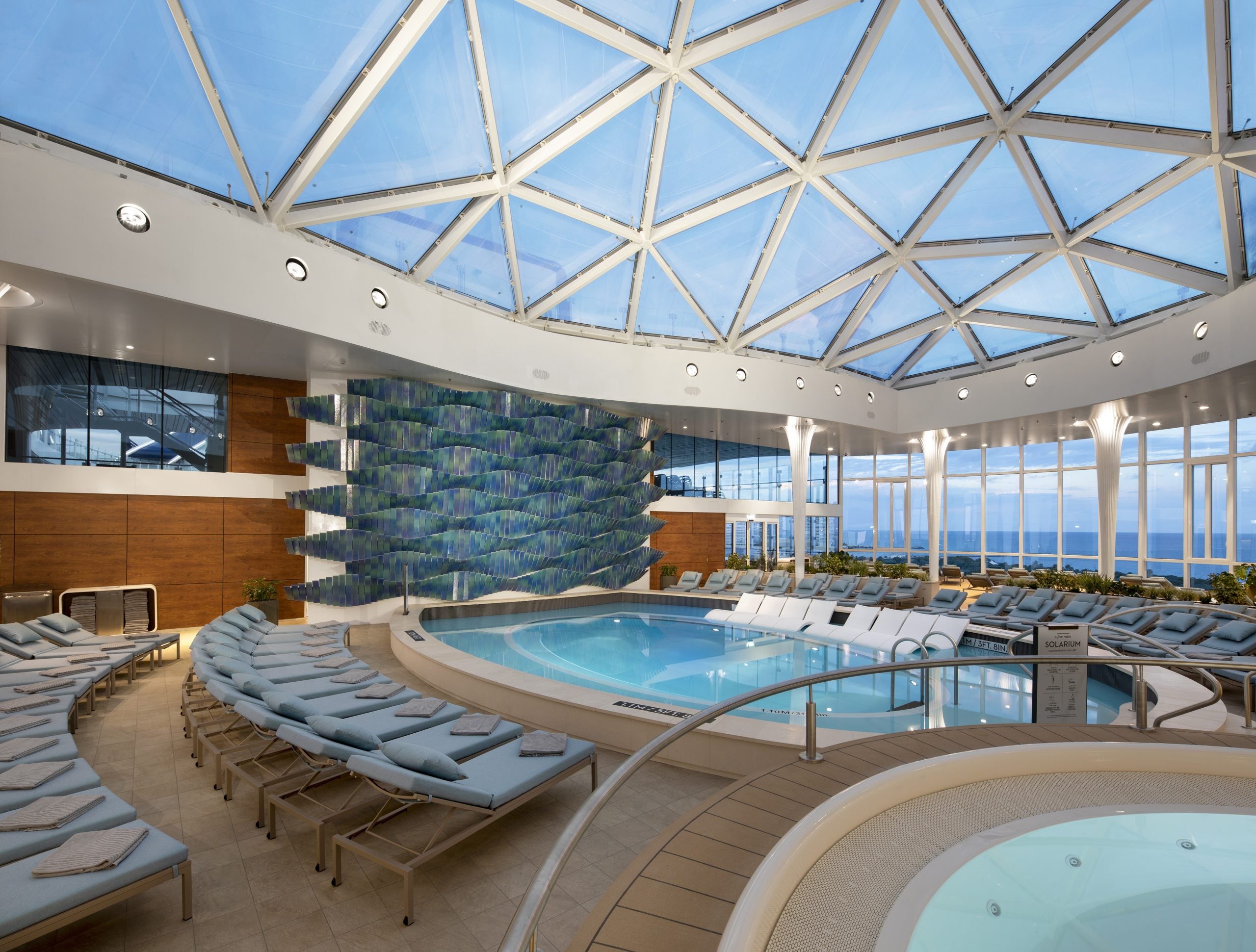
In addition to being Celebrity's newest and most innovative ships, the Edge Class vessels are the line's biggest ships — though they aren't all that much bigger than the line's Solstice Class ships. The bigger size allows for a few more onboard venues than can be found on the line's older vessels.
Note that the fourth vessel in the Edge Class series, Celebrity Ascent, is a tad bigger than its two predecessors, which allows for a few new and expanded features like additional solo cabins and a private room that groups can rent for karaoke, movie screenings and virtual games. Meanwhile, slightly older sister ship Celebrity Beyond was the first to introduce an expanded "resort-within-a-resort" area for suite passengers called The Retreat. It offers a new two-story sun deck with hot tubs, lounge chairs and private cabanas that are open exclusively to passengers staying in suites.
The two newest vessels also include a greatly expanded Sunset Bar at the back of the vessel with a Morocco-inspired design imagined by celebrity interior designer Nate Berkus and a new restaurant created by star chef Daniel Boulud.
Celebrity has plans for five Edge Class ships. One more vessel is under construction for delivery in 2024.
Solstice Class
Ships in class: Celebrity Reflection (2012), Celebrity Silhouette (2011), Celebrity Eclipse (2010), Celebrity Equinox (2009), Celebrity Solstice (2008).
Size: 121,878 to 125,366 tons.
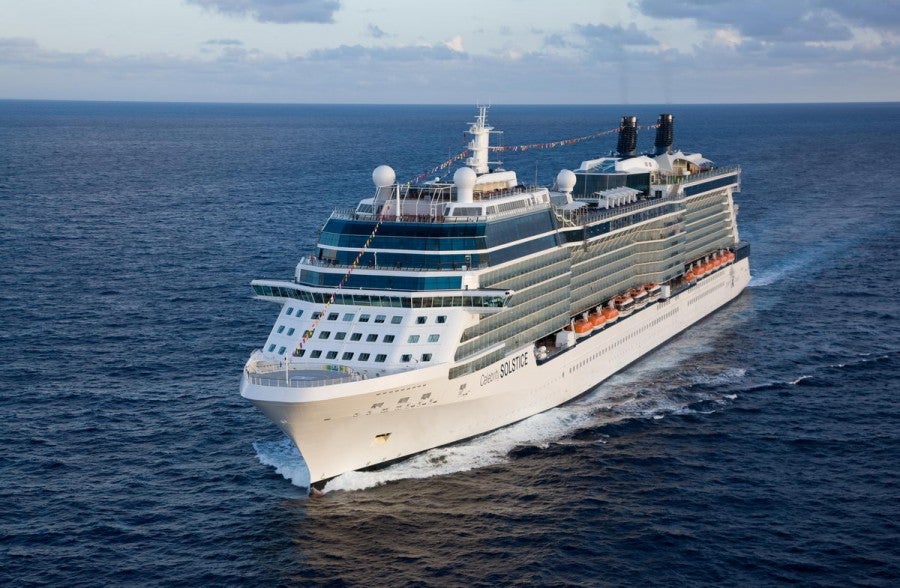
Comprising five vessels, Celebrity's Solstice Class is the biggest class of ships at the line and it accounts for nearly half of the brand's total capacity.
As such, the Solstice Class is probably the class of ship you will sail on the most if you become a Celebrity regular. Solstice Class ships sail everywhere from the Bahamas, Caribbean and Alaska to Europe, Asia and Australia.
When this class of ship first started rolling out in 2008, they were heralded for their game-changing design and features, including a few things that still are unique in the cruise world.
Related: The 5 best destinations you can visit on a Celebrity cruise
Just a tad smaller than the Edge Class ships, the Solstice Class vessels are perhaps best known for the innovative, half-acre Lawn Club areas on their top decks, which feature real grass.
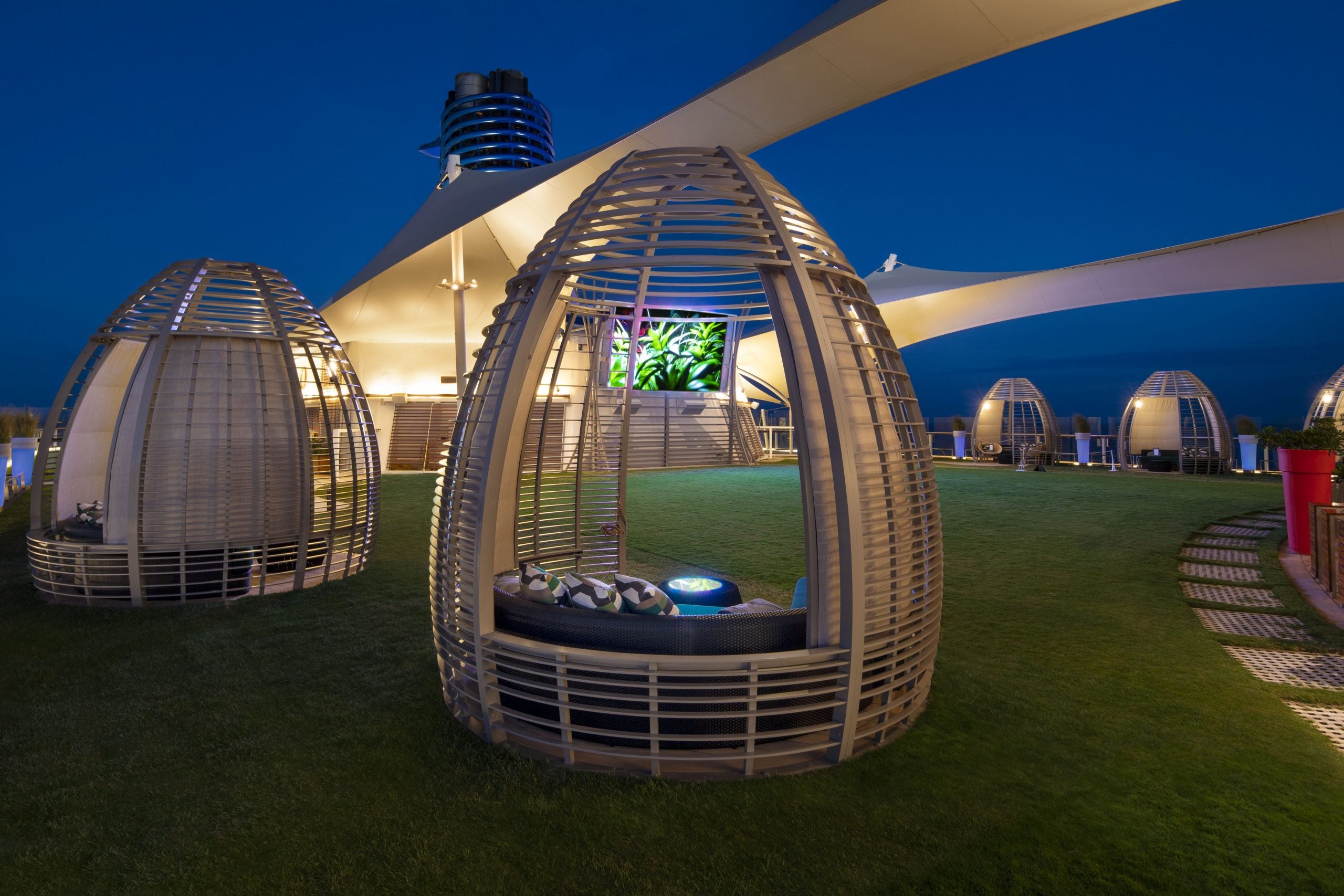
Marvels of cruise ship engineering, the Lawn Clubs are maintained by full-time greenskeepers who oversee a complex filter and irrigation system to keep the grass looking shipshape. Home to Adirondack chairs, hammocks and lawn games such as bocce and croquet, these Lawn Club areas offer a quiet, park-like respite from the activity in other parts of the ships.
If you want, you can walk across the Lawn Clubs barefoot.
Among other unusual features, some of the Solstice Class ships also have a glass-making pavilion next to the Lawn Club that offers glass-making classes conducted in partnership with Hollywood Hot Glass.
The Solstice Class ships are also home to some of the most stylish outdoor pool decks at sea. Like the Edge Class ships, they also feature indoor, adult-only pool areas that, notably, are topped with glass panels embedded with solar panels that contribute to the ship's power grid.
In addition, the Solstice Class ships feature large spas, casinos, showrooms and a wide range of restaurants, including the line's signature French venue, Murano.
Other places to dine on the vessels include Le Petit Chef, which offers an augmented reality dining experience using tabletop projections, and the Lawn Club Grill, part of the Lawn Club.
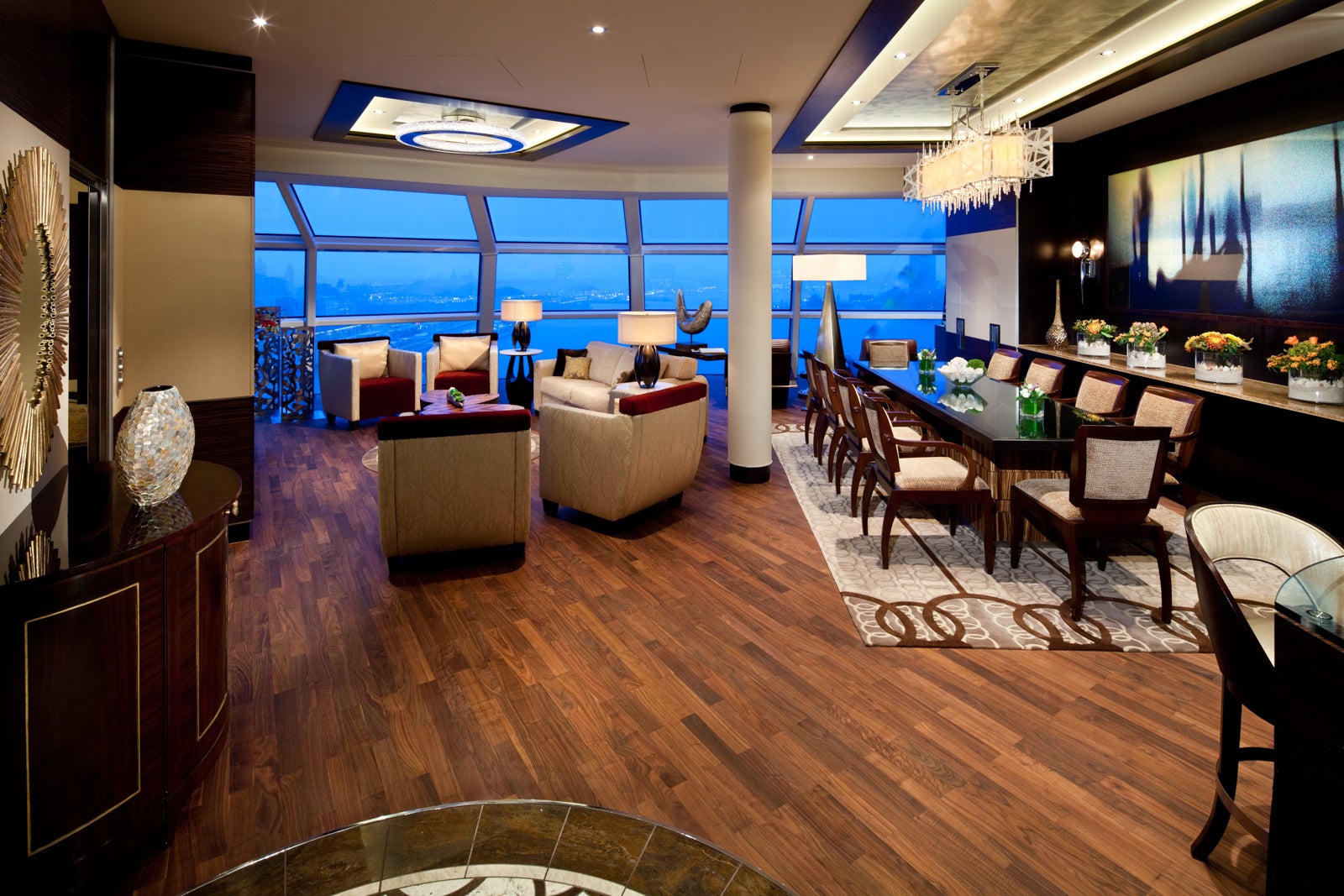
One of the Solstice Class ships, Celebrity Reflection, is also home to one of the cruising world's most spectacular suites — the 1,646-square-foot Reflection Suite. It was the first two-bedroom suite ever on a Celebrity Cruises vessel.
Millennium Class
Ships in class: Celebrity Constellation (2002), Celebrity Summit (2001), Celebrity Infinity (2001), Celebrity Millennium (2000).
Size: 91,000 tons.
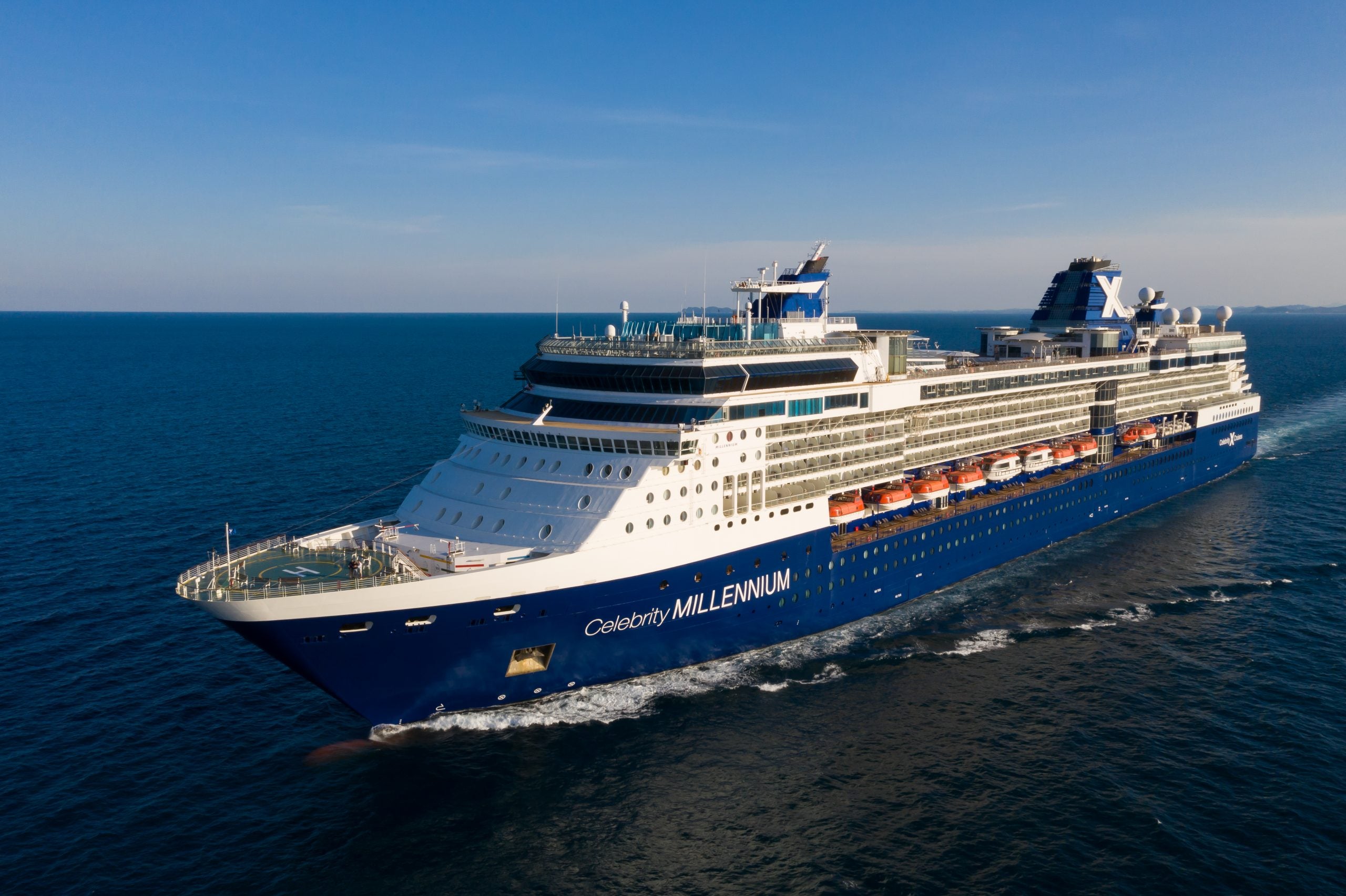
The oldest of Celebrity's three main classes of vessels is its Millennium Class. The four ships in the series began rolling out in 2000 (at the turn of the millennium, hence the name) and all are now around 20 years old.
Despite their age, the vessels still appear very up to date, thanks to some major overhauls in recent years.
Initially, the Millennium Class ships and Solstice Class ships had quite a few differences. However, over the years, these differences have narrowed as Celebrity has added some of the most popular Solstice Class venues to the Millennium Class ships, too.
Related: The ultimate guide to Celebrity's Captain's Circle loyalty program
The most obvious difference between the two classes of ships today is the smaller size of the Millennium Class vessels. They're about 30% smaller than Solstice Class ships.
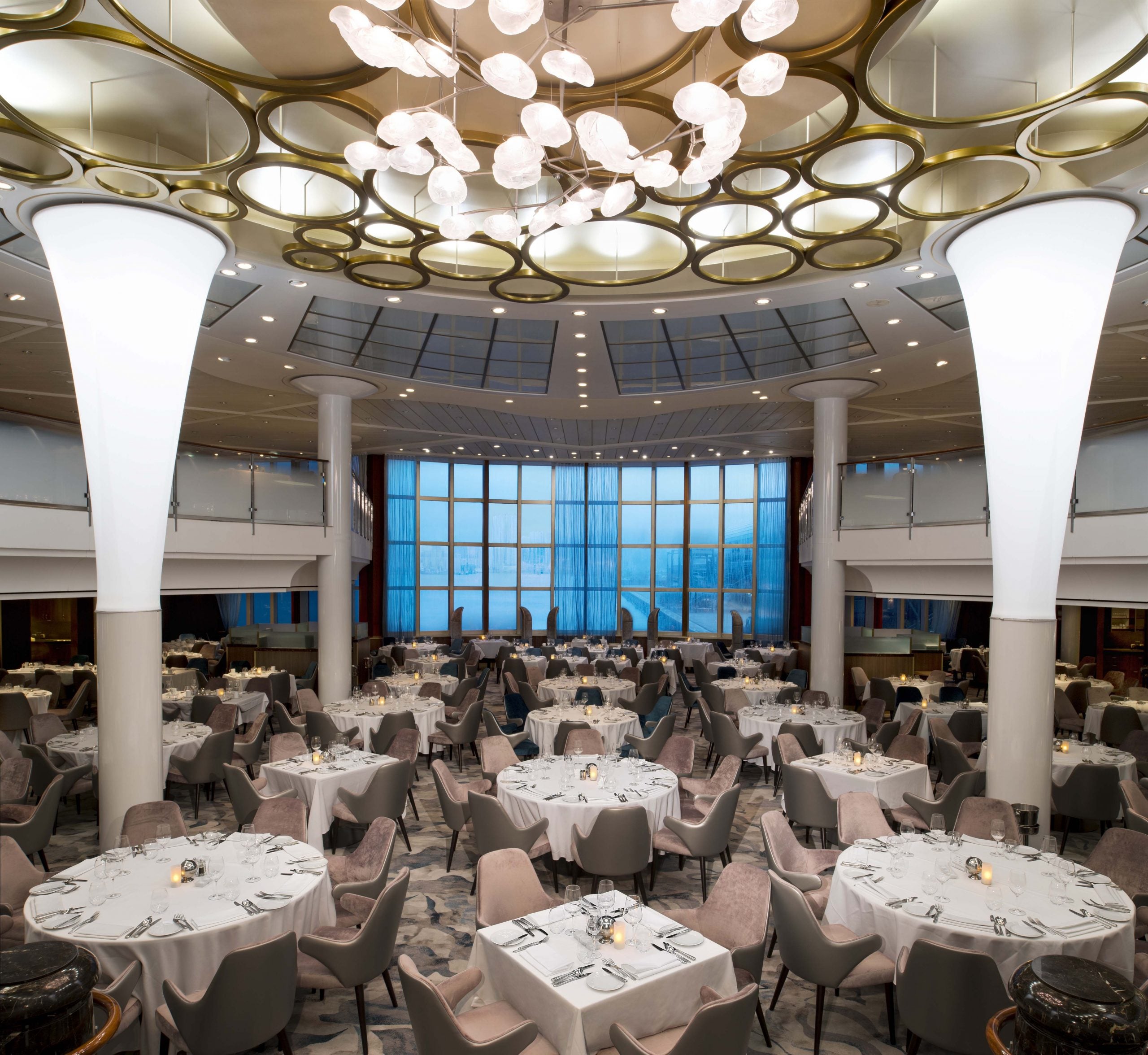
This smaller size can make the Millennium Class vessels a good choice if you're the kind of cruiser who prefers a more intimate experience.
However, the smaller size also means that the Millennium Class ships have fewer venues in all than the Solstice Class or Edge Class ships.
All the restaurants you'll find on Millennium Class ships are on Solstice Class ships, for instance. However, not all the eateries on Solstice Class ships can be found on Millennium Class ships. If you're a fan of Murano, you won't find it on the Millennium Class.
Galápagos vessels
Ships: Celebrity Flora (2019), Celebrity Xploration (2007), Celebrity Xpedition (2001).
Size: 2,842 to 5,739 tons.
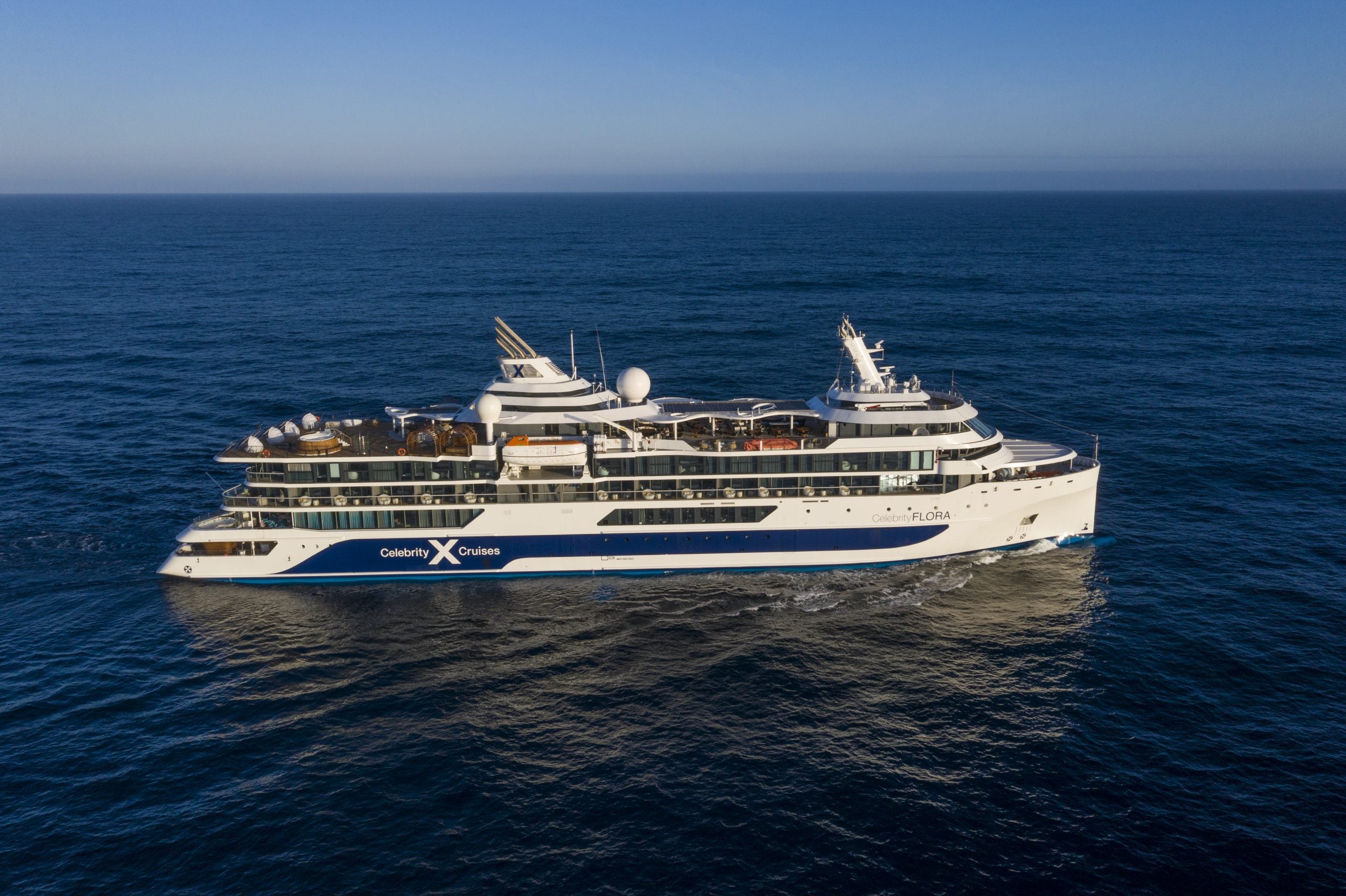
As mentioned above, Celebrity operates three very small vessels in The Galápagos Islands.
While each one of the vessels is a bit different, they can logically be grouped together, as they offer a similar type of cruise experience — one custom-designed for the islands where they sail.
The cruise experience on these three vessels is different than what you'll find on Celebrity's larger ships. The vessels are smaller than Celebrity's traditional ships, carrying just 16 to 100 passengers. In contrast, Celebrity's larger ships accommodate 2,000 to 3,000 passengers.
The smaller size means the three Galápagos vessels have fewer onboard amenities than the bigger Celebrity ships. If you love the onboard attractions of Celebrity Solstice or Celebrity Edge, know you won't get the same array of bars, restaurants and entertainment in the Galápagos.
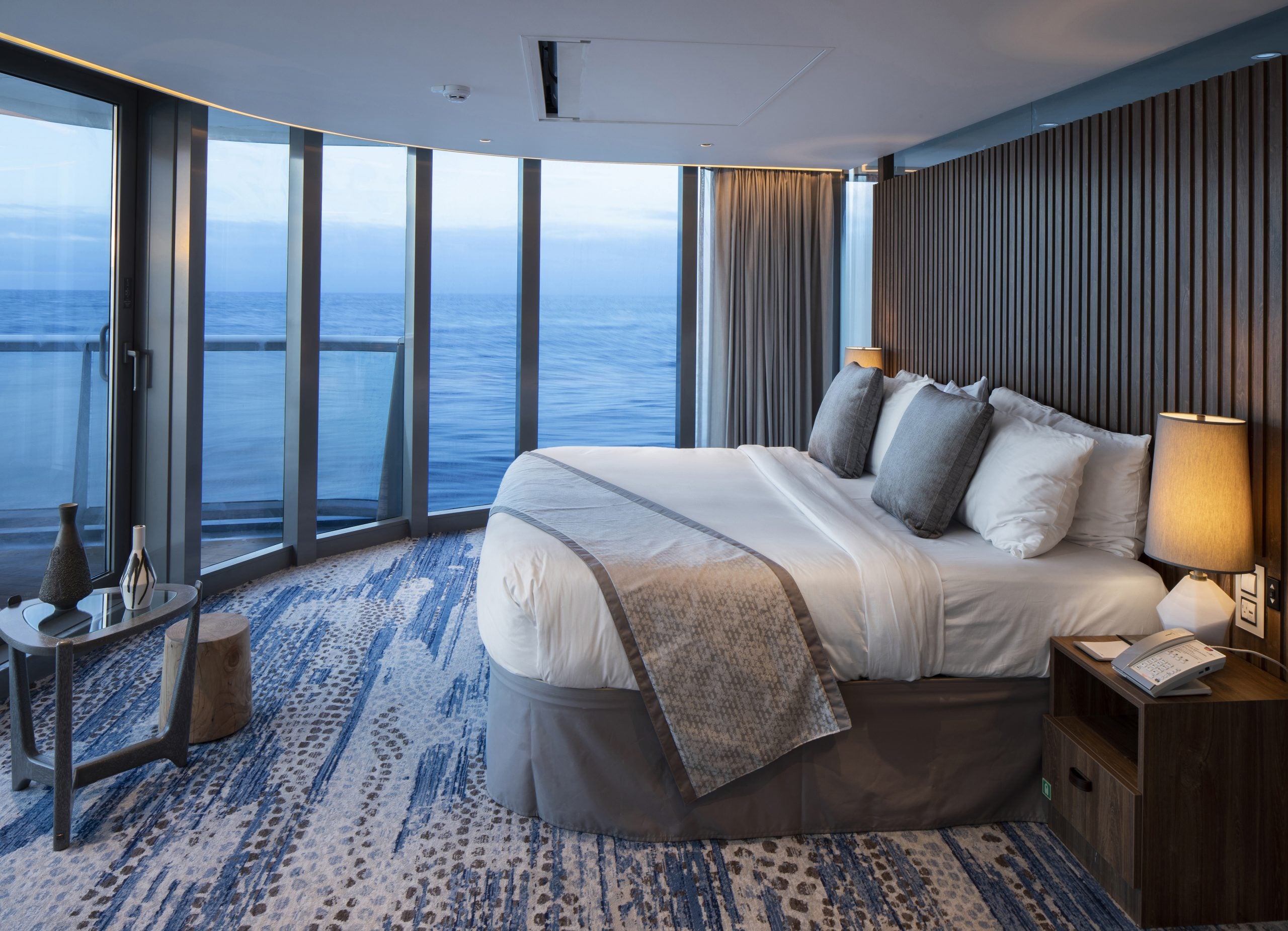
That's okay because cruising in the Galápagos isn't about the time you spend on board. The goal is to experience the region's unique wildlife that inspired Charles Darwin's theory of natural selection.
To do that, you need to get off the ship. All three of Celebrity's Galápagos vessels are expedition vessels that carry landing craft for exploring in remote areas and sail with knowledgeable guides who are all Galápagos National Park-certified naturalists.
The highlights of each day are the daily landings with these guides to view the destination's famous tortoises, blue-footed boobies, land iguanas and Darwin's finches.
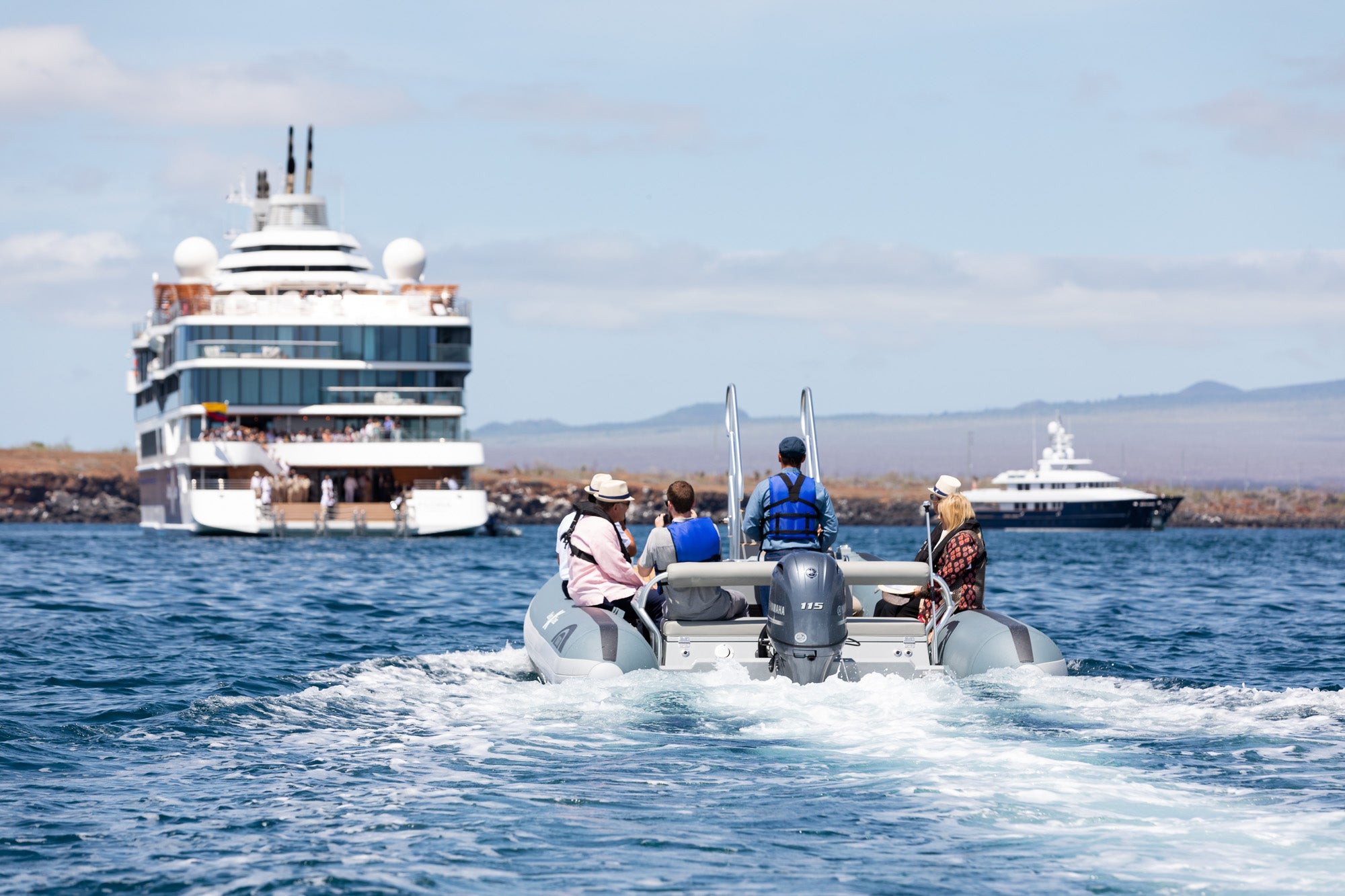
One of the newest and most luxurious vessels in the Galápagos, the 100-passenger Celebrity Flora features two restaurants with menus crafted by a celebrated chef, a laboratory for hands-on science lessons, multiple lounges, a plunge pool, a stargazing platform and two sets of cabanas for deck-top glamping.
All of Celebrity Flora's accommodations are suites. The top rooms on board are two penthouse suites that measure 1,300 square feet each and span the entire width of the ship.
Bottom line
The Celebrity Cruises fleet is relatively easy to understand. There are three main classes of vessels — the Edge, Solstice and Millennium classes. There's also a fourth grouping of three small vessels that operate exclusively in the Galápagos. You'll find a lot of consistency from ship to ship in the Celebrity fleet in the type of venues that you find on board.
If you're looking for the most venues and amenities, or if you're the type of cruiser who only wants to be on the very newest ships, you'll gravitate toward Celebrity's Edge Class vessels.
If a smaller, more intimate ship is more your style, you probably want to take a look at the line's Millennium Class vessels. And if you have any interest in visiting the Galápagos — a once-in-a-lifetime-type destination — it's hard to beat the line's three small Galápagos vessels.
Planning a cruise? Start with these stories:
- The 5 most desirable cabin locations on any cruise ship
- The 8 worst cabin locations on any cruise ship
- A quick guide to the most popular cruise lines
- 21 tips and tricks that will make your cruise go smoothly
- 15 ways cruisers waste money
- 12 best cruises for people who never want to grow up
- What to pack for your first cruise

Cruise Ship Ranks and Hierarchy
Working on a cruise ship is a unique environment. Although one may argue that it’s just a floating resort, a look closer identifies that hierarchy and ranks are embedded in each cruise job onboard. By understanding the difference in stripes and ranks you’ll get to know how the chain of command works on a cruise ship.
Overview of Cruise Ship Hierarchy
A cruise ship is run like a small corporation. Similar to the president of a company, the Captain is in charge and is ultimately responsible. The Captain has a handful of senior officers that report to him just like a handful of vice presidents that would report to the president of a company. Beyond those high level ranks, the larger the cruise ship, the bigger the organizational chart of other ranks and cruise ship jobs that there are.
Typically, each department has a department head, managers, supervisors and crewmembers. (The actual title of each cruise job varies by cruise line). This equates to a chain of command that all those working onboard must adhere to. Another term for cruise job is rank. The rank of all officers and crew on cruise ships governs not only their working environment but also their cabin assignment, where they eat, their emergency duty, and whether or not they have access to passenger facilities.
History of Hierarchy and Rank on Cruise Ships
When you look at both naval ships and cargo vessels, there has always been a strict hierarchy of command. Maritime laws govern safety of life at sea with regulations that must be followed by all officers and crew working onboard the vessels. The Golden Era of ocean liners evolved into the cruise industry today where cruise ship safety is also paramount.
In the past, cruise ship hierarchy was a very militarized organizational structure with lower ranks rarely questioning the authority of higher ranks. In addition, only few departments such as the Deck Department and the Engine Department wore stripes to indicate their officer status.
Although there are many differences in how cruise ships are managed today, the officer ranking system continues to be in place and has inevitably been expanded. In an interview with Royal Caribbean’s Captain Erik Standal for the website, Beyond Ships, Standal explains that the traditional militarized hierarchy on cruise ships is still necessary.
“We are a small community and in a community you have to have some order to control certain people.” He points out, “You have the ranking system in order to make it clear who is making the decisions…”
Cruise Ship Management Hierarchy
On today’s cruise ships, in addition to the Captain being in charge, there are a handful of senior officers that manage the ship’s operations and report to the Captain. These jobs include Staff Captain, Chief Engineer, Hotel Director, Cruise Director, Doctor, Food and Beverage Manager, and Staff Engineer.
Each of those department heads have managers and supervisors that report to them as well. (See the Cruise Ship Job Positions for more information.) Plus, each department is responsible for specific emergency duties.
Cruise Ship Officer Stripes
When you first start working on a cruise ship it may be overwhelming to understand how all the departments work together, who’s in charge of what and who reports to whom. Getting to know how to interpret the stripes on their epaulets is the first step. (Reading the officer’s name tag is an alternate method). For starters, each department’s stripes are represented by a specific colour of stripe.
- Deck Department – Black and gold stripes
- Engine Department – Purple and gold stripes
- Hotel Department – White and gold stripes
- Medical Department – Red and gold stripes
The number of stripes indicates the rank of the officer. The more stripes, the more authority the officer has within their department. Each cruise line varies slightly with how many stripes a particular cruise job may have. In all cases, the Captain has the most stripes (4+ black and gold stripes)
Comparatively, in the Hotel Department, the Hotel Director is the head of his/her department. He/she may have four stripes. This person looks after all guest services, entertainment and revenue on the ship. Therefore, the Cruise Director, Doctor, Food and Beverage Manager, Customers Services Director, and Human Resources Manager all report to the Hotel Director and typically have between 3 – 3.5 stripes.
In some cases it’s difficult to tell who’s who on a ship because there are so many people wearing stripes. (Note: Some cruise jobs may not actually wear stripes but their job has a stripe equivalent in the case of the Cruise Director.)
Cruise Ship Chain of Command
Each cruise line has a slightly different organizational chart when it comes to the chain of command. Yet, most cruise lines follow the same chain of command protocol.
Click here for a simple diagram of cruise ship organizational hierarchy .
On cruise ships, you are expected to follow the chain of command whenever you have a complaint or concern. Always speak to your immediate supervisor first and allow them to make an effort to solve the issue. At no time should you jump the chain of command and proceed directly to the Captain.
When the Chain of Command Breaks Down
There may be times when you feel that your immediate supervisor has not dealt with the issue at hand. Or, possibly your immediate supervisor is the issue. If that’s the case, you take it one step up the chain of command and speak with the next in line.
Most cruise ships also have a Human Resources Manager onboard. This person is onboard for situations that you feel that can’t be resolved within your own department and also for situations that you feel are sensitive or personal. Feel free to speak this onboard HR manager.
All in all, working onboard a cruise ship can take a bit of getting used to, with its overly structured environment. But, once you experience it, you appreciate it. You know exactly what you can and cannot do. You know what your responsibilities are. You know who you need to report to. This military style is not for everyone, but many crewmembers and officers careers thrive in this environment.
We use cookies to ensure that we give you the best experience on our website.

Understanding Cruise Ship Officer Stripes
Let’s talk about stripes, baby. Nope, we’re not talking about zebras, we are talking about the stripes on the shoulders and sleeves of so many uniforms onboard a cruise ship. These stripes, more formally known as epaulettes, denote not only what rank an officer is, but can also offer insight into which department they work in as well as in some cases what they do on onboard. This post will help you understand what cruise ship officer ranks correspond to what cruise ship officer stripes .
While most people know there are 3 departments onboard a cruise ship – Technical, Deck, and Hotel – when it comes to stripes though there are a few extra categories to know about, namely: medical, environmental, IT, and human resources.
Can You Still Have a Cruise Ship Officer Rank Without Stripes?
Now, not every crew member onboard a ship that has “officer privileges” wears a uniform with stripes. When I was working onboard I never had a uniform with epaulettes. There is a tricky category that exists in the cruise ship world known as “stripe equivalents”. These are crew that’s uniforms do not feature stripes but they get privileges and benefits as if they had that equivalent amount of stripes. These are hotel positions and are things like: Cruise Director, Cruise Staff, Shore Excursions, Youth Programs, Production Managers, Cast Members, etc. For a deeper understanding of overall cruise ship rank structure, take a look at this post Understanding Cruise Ship Ranks . (Note: on some cruise lines some of the above positions will be uniformed striped positions)
Take a look at the below guide to understand how cruise ship crew officer ranks affect how many stripes they wear. The next time you’re onboard you can play a little bit of I-Spy and who’s who and impress your friends! Onboard ship these stripes are part of a much larger cruise ship rank system and the jobs listed here are just a sampling of all of the different jobs that exist on a cruise ship. Understanding what the epaulettes mean is just part of understanding the complex system that keeps a cruise ship running.
Without any further a-do, let’s talk about stripes.
Note: For nearly everything below, aside from the top four or so positions and especially within the hotel department there are differences between cruise lines. This is to act as a general guide and not a definitive guide.
The Color Between the Stripes Denotes Department, Not Rank
You may have noticed while onboard that some of the stripes have colors between them. Here’s a quick outline of what those mean:
Note: 1) This outline is based on what it is on many cruise lines. It is not the same amongst every cruise line but the base concepts are the same. 2) Gold stripes are most conventional; however, silver stripes are sometimes used. These can for instance be seen on some TV shows showing yacht-life.
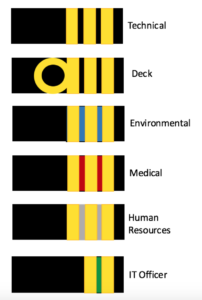
- Technical Department : Gold stripes, no cloth in between stripes, no loop at the top; they do sometimes have propellers at the top.
- Deck Department : Gold stripes, no cloth in between stripes, with a loop, diamond, or anchor at the top.
- Hotel Department : Gold stripes, white cloth in between stripes, no loop or propeller. **Reliable sources have told me that some cruise lines hotel departments have silver stripes instead of gold.**
- Medical : Gold stripes, red cloth in between, no loop or propeller
- Environmental : Gold stripes, blue cloth in between. No loop or propeller.
- Human Resources Department : Gold stripes, grey cloth in between. No loop or propeller.
- IT : Gold stripes, green cloth in between. No loop or propeller. (Green on some lines is for environmental)
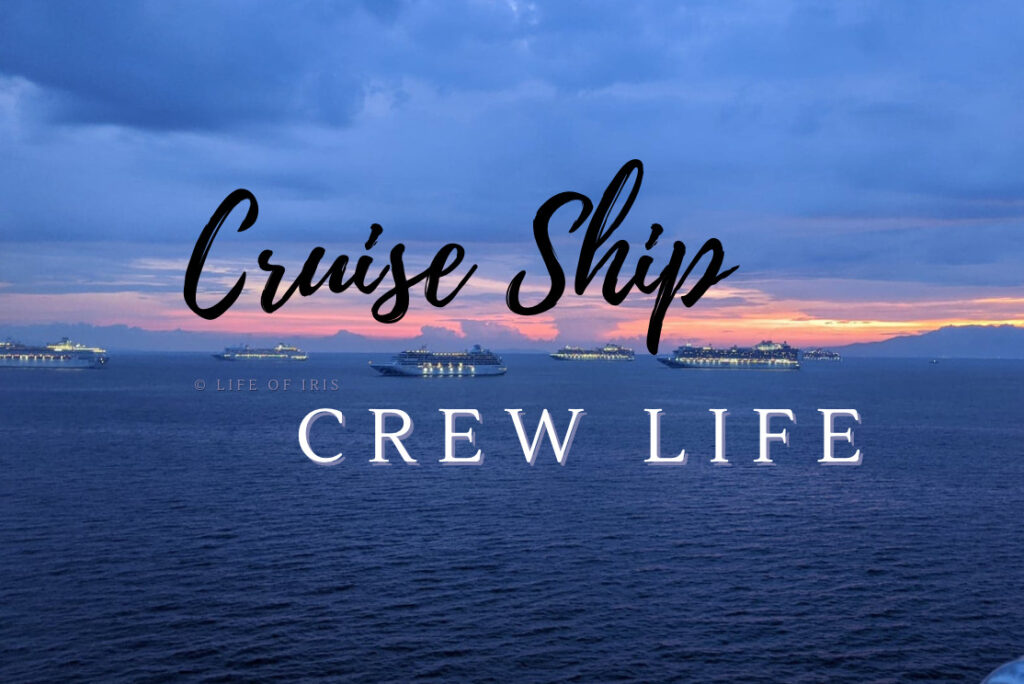
Want to know more about cruise ship crew life? From dating onboard to how crew get their mail…here’s a guide to cruise ship crew life .
How Many Stripes Do Different Cruise Ship Officer Ranks Have?
As you may have guessed, with greater stripes comes greater responsibility. Yes, the more stripes you have the higher your rank.
Rank Affects Onboard Privileges
There are slight differences in privileges amongst the cruise ship officer ranks. The most notable (other than responsibility and salary) is cabin. Typically from two stripe up the cabin will have a porthole. Three stripe and up might even have a regular sized window.
There are some subtle other differences. Some cruise ship officers of a certain rank might get free dinners in certain specialty restaurants, may get a discount in the onboard shops, or might even get to sit on a bar stool in a passenger lounge. There are lots of subtle ways that how many stripes and the corresponding rank affect life onboard a cruise ship.

Half Stripes Are a Thing
Did you know that you can have a half stripe? Half stripes can appear in three ways. The first is the rank itself. You can be a 1/2 stripe officer, this could be as a cadet, or certain positions in the Hotel Department. The second is at the top of the epaulette. If the half stripe is at the top of the epaulette it means that it is a ranked position. (See below with Staff Chief Engineer being a half stripe below Chief Engineer).
Lastly, the last way a half stripe appears is in between two full sized stripes. This means that is the highest that your position can go, that you’ve been in the job for a set number of years – typically three or five, and normally that there isn’t a direct next step in advancement. This is sometimes referred to as a “frustration stripe”, as in, you are frustrated that you can’t move up or if there is an advancement opportunity you haven’t moved up (yet).
*Note: Below I have only noted 1/2 stripe cruise ship officer ranked positions versus writing out possible positions.
*Note: Amazon Affiliate. If you click on links from Amazon and make a purchase I may receive a small commission at no cost to you.
What Stripe Does the Captain Have?
4 stripe with a heavy bottom stripe and a loop (or diamond/ anchor / other insignia) :.

What Are 4 Stripe Officer Positions on a Cruise Ship? :
So, who has four stripes? The highest ranking officers onboard have four stripes. These are typically the Chief Engineer, Staff Captain, and Hotel Director. Some cruise lines will also have the Staff Chief Engineer as four stripes. These are all considered “staff officer” positions. (That particular title might differ between cruise lines but they’re the highest ranking that likely have additional privileges).
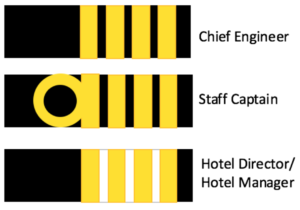
- On some cruise lines: Staff Chief Engineer
- Staff Captain
- Hotel Director (also known as Hotel Manager/Hotel General Manager)
3 ½ Stripe Officers:

- Staff Chief Engineer (Staff Officer Rank) Note: On some cruise lines this position has four stripes.
- Senior Doctor
- Assistant Hotel General Manager/Hotel Director
What Are 3 Stripe Officer Positions on a Cruise Ship? :
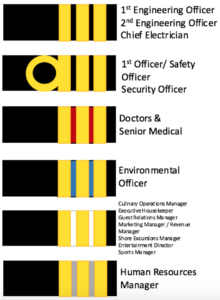
- 1 st Officer (sometimes called Safety Officer)
- Security Officer (on some lines this is 2 stripes)
- Environmental Officer (blue stripe in between)
- Senior Medical Officer
- 1 st Engineering Officer (sometimes called AC Engineer)
- 2 nd Engineering Officer
- Chief Electrician
- Executive Housekeeper
- Culinary Operations Manager/Food and Beverage Director
- Guest Relations Manager
- Marketing Manager / Revenue Manager
- Shore Excursions Manager
- Entertainment Director
- Sports Manager
- Human Resource Manager (grey stripe in between)
2 ½ Stripes Officers:

What Are 2 Stripe Officer Positions on a Cruise Ship? :
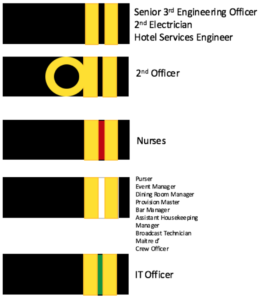
- 2 nd Officer
- Security Officer (on some lines this is 3 stripes)
- Senior 3 rd Engineer
- 2 nd Electrician
- Hotel Service Engineer
- Event Manager – for some lines this is 1 stripe, and Entertainment Director role would often be 3 stripes
- Dining Room Manager
- Provision Master
- Bar Manager
- Assistant Housekeeping Manager
- Production Manager (sometimes 3 stripes)
- Broadcast Technician
- Crew Officer
- IT Officer (green stripe in between)
What Are 1 Stripe Officer Positions on a Cruise Ship?:

- 3 rd Officer
- Junior 3 rd Engineer
- 3 rd Electrician
- Assistant Hotel Service Engineer
- Assistant Dining Room Manager
- Specialty Dining Room Managers
- Guest Relations Supervisor
- Night Audit Officer
- Port Paper Officer
- Assistant Housekeeper
What Are the Officer Positions On A Cruise Ship?
It might seem like officer positions are the same on every cruise ship and with every cruise line, but that’s not the case! Specifically within the Hotel Department which positions are officers can be different by different cruise lines. The Technical (engineers) and Deck (Navigation) departments are much more consistent.
Want to know more about how cruise ship officer rank affects life onboard? Take a look at this post about Understanding Cruise Ship Ranks .
There Is a Lot to Understand about Cruise Strip Officer Stripes
Now, the next time you’re onboard you’ll have a better idea of what the cruise ship officer stripes mean and how to tell the different cruise ship officer ranks based on their epaulettes!
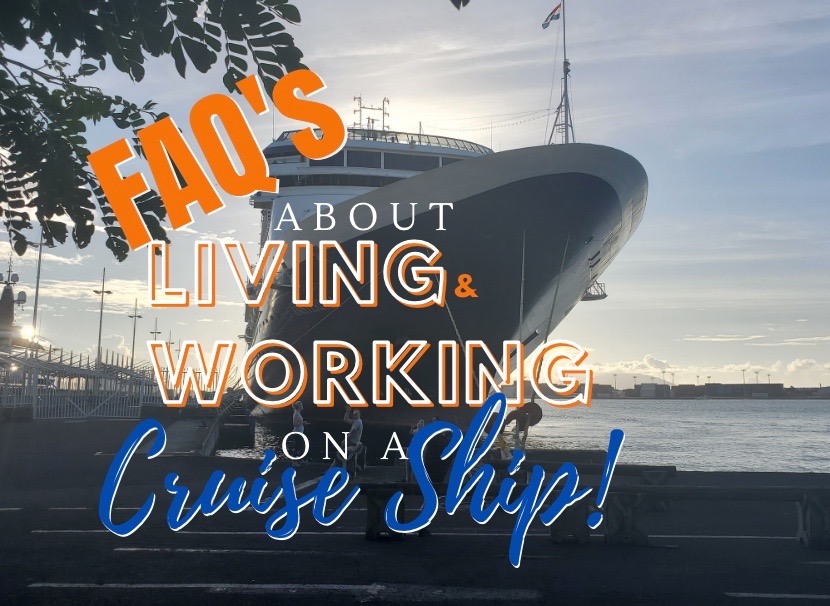
Curious what life is like onboard a cruise ship? Take a look at these FAQ’s About Living and Working on a Cruise Ship .
Thinking of Taking a Cruise?
Thinking of going on a cruise and not sure where to start? Talk to a travel advisor! My favorite local agency would be happy to help you. Call 1-877-MILNE4U or email me at [email protected] and I will get you in touch!
Ever wonder what it takes to become a cruise ship officer? Check out this interview with a cruise ship engineering officer to find out.
Join Our Mailing List!
A once a week email with the latest posts and exclusive updates.
Similar Posts

Where Are We Going?: May 2020 Edition
I’ve written a bit about how the ability to be flexible in this situation is what keeps you sane and functioning. That hasn’t changed in the last month, as we have no idea where we’re going. I seem to have gotten to a complacent level of that though as at this point I don’t really…
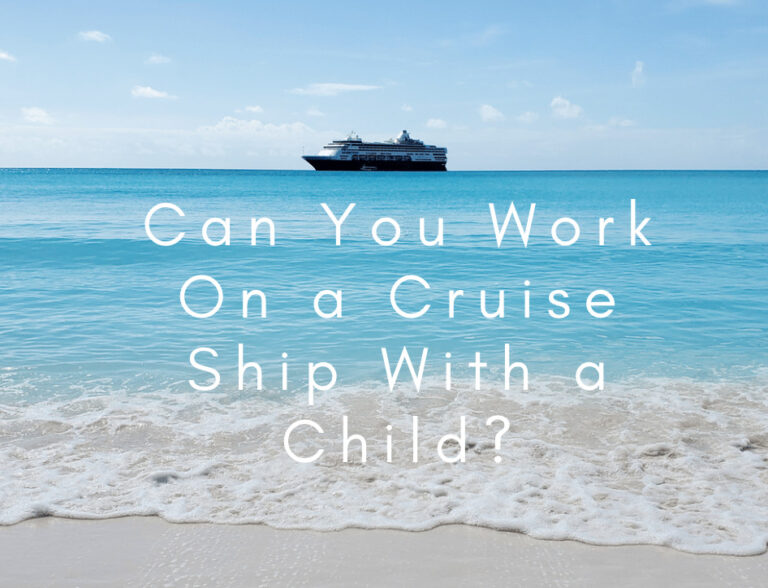
Can You Work On a Cruise Ship With a Child?
Wondering if you can work on a cruise ship with a child? Maybe you’re thinking of working onboard a cruise ship and you have a child. Can you bring them with you and give them a chance to see the world? Maybe your spouse just got a job offer working onboard and you’re wondering if…

All of the Ships
Today we arrived in Manila, Philippines where we are sitting at anchor outside the port. We happen to be sitting at anchor surrounded by 21 other cruise ships. So for today, we’re not going to talk about the intricacies of quarantine and testing protocol for yet another country. Today we’re going to talk about cruise…
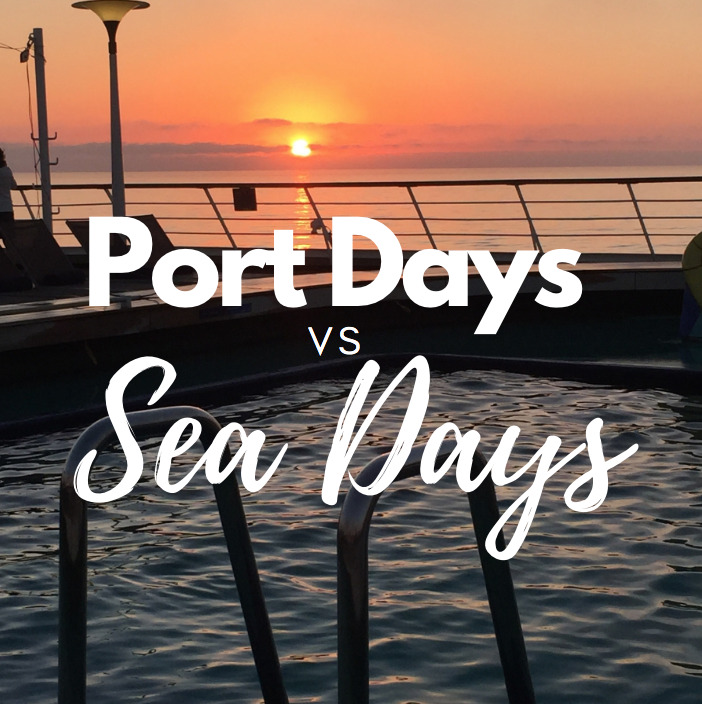
Port Days vs. Sea Days
At the beginning of my career working on cruise ships I was offered a contract that was going to Hawaii. I thought it was an incredible once in a lifetime experience. What I found was that my naïveté of cruise ship life was showing. The reason being, that while Hawaii is beautiful and wonderful, if…

The Questions Post: April 2020, Covid-19 Edition
Welcome to the questions post! Thank you so much for people that have reached out to ask how we are doing onboard and what is going on. So, without further adieu, here we go! Q: Where are you going? /When will you get there? A: What excellent questions! Each time I have written a “Where…
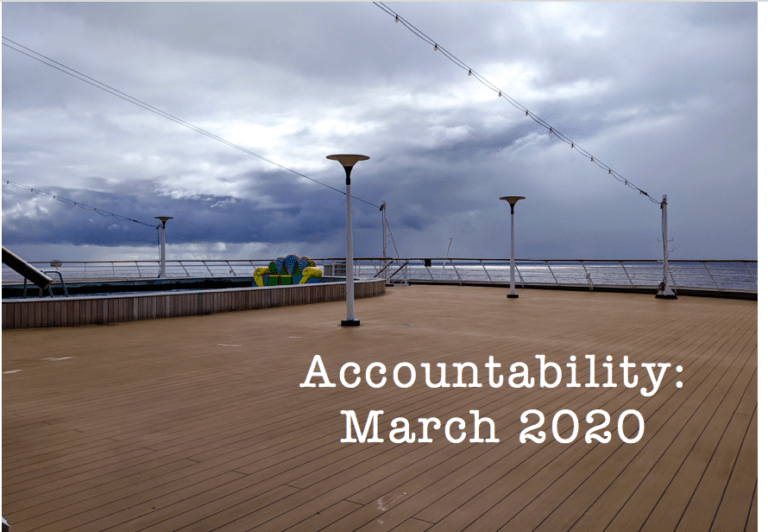
Accountability: March 2020
I am a 31 year-old, largely unemployed weird version of a stay at home wife. I am currently sailing with him on the cruise ship he is working on. There are no guests on board and we are re-positioning between Australia and Fort Lauderdale, Florida. At present we are about five days away from South…
Leave a Reply Cancel reply
I sailed on Royal Caribbean's Icon of the Seas. These were my 8 favorite amenities on the world's largest cruise ship.
- Royal Caribbean invited me to spend three complimentary nights on its new Icon of the Seas in January.
- My eight favorite amenities included the waterpark and jazz bar.
- I've yet to see most of the amenities on my list on other cruise ships.

There's a reason Royal Caribbean's new mega-cruise ship is only operating seven-night sailings .
The 1,196-foot-long, 20-deck Icon of the Seas is packed with bars, restaurants, and things to do. Any shorter of an itinerary, and you might not have time to experience all it has to offer.
If you're a frequent cruiser — especially with Royal Caribbean — amenities like the mini-golf course and water playground may not seem exciting.
But of all the activities the new world's largest cruise ship has to offer, my eight favorites are, for the most part, ones I've yet to see on another vessel.
Take a look at what made the cut.
1. The six-slide waterpark
It wouldn't be a roundup of Icon of the Seas' best amenities without a mention of its waterpark.
Plenty of family-friendly cruise ships have waterslides, but few have six — or even one that requires a multi-person raft.
However, if you don't like the feeling of your stomach dropping, I'd advise skipping the 46-foot-tall drop slide.
2. The adult-only suspended infinity pool
The 7,600-guest Icon of the Seas has seven pools and nine hot tubs. As a kid-fearing adult, I loved the grown-ups-only suspended infinity pool.
I spent my time there perched at one of its in-water loungers, contently splashing my legs around the water, wondering if I actually hated cruises.
While I would've preferred a quieter atmosphere (the DJ did not, in fact, play smooth jazz), the pool's views, day beds, and lack of screaming children were hard to beat.
3. The Crown’s Edge thrill 'ride'
There's no need to grab coffee before harnessing up for the part-zipling, part-agility Crown's Edge course. You'll be jolted awake when the floor drops from beneath your feet, leaving you dangling 154 feet above the ocean before the zipline kicks in.
Unfortunately, it comes with two costs: $49 and a spike of anxiety.
4. The 'Wizard of Oz' and 'Aqua Action!' shows
If you hate cruise shows, Icon of the Seas could make you change your mind.
The ship's riff on Broadway-approved "Wizard of Oz" — 16-piece live orchestra and flying bed included — delighted me, a hater of most musicals.
For something less traditional, the semi-circle AquaDome theater hosts a compelling multi-disciplinary swim, dive, and aerial show reminiscent of Cirque du Soleil.
It's the first show-at-sea I've seen with a waterfall and nine-foot-tall robotic arms, and so far, it's one of my favorites.
5. The live jazz bar
Ya like jazz? So do I.
Icon of the Seas has plenty of live music venues — including rowdy karaoke and dueling pianos bars, if that counts. But if you're a jazz fan or looking for a peaceful nightcap, none of these options will top the live music at Lou's Jazz 'n Blues.
6. The customizable Mediterranean-style wrap at the five-stall food hall
The mega-ship's food hall wasn't nearly as diverse or exciting as the one on Norwegian Prima .
But compared to the rest of my mediocre meals on Icon of the Seas — including dinner at a specialty restaurant — my complimentary pork pita wrap from the food hall's Mediterranean-inspired stall was admittedly pretty decent.
The Cava -like meal was balanced, succulent, and filling. Ending it with a strawberry nutella crepe from one of the vendors didn't hurt either.
7. The Pearl Café with sweeping ocean views
Everyone takes a picture inside the Pearl . But few people know that the best part about the glittering structure isn't what's inside it — it's what's behind it: the Pearl Café.
Admittedly, the food wasn't standout.
But it's 2024. In this era, we don't dine for food. We dine for vibes . And the Pearl Café was definitely "serving" (even with its mediocre sandwiches).
At first glance, I had snubbed the dining and lounge area as a rip-off of a generic airport coffee shop. But during my three days on Icon, I returned to the centrally located space more often than expected. It turns out it's a great place to get some work done.
8. The lounging pods that tower above passerbys
Speaking of vibes, if you're looking for a secluded place to drink (as in, not the swim-up pool bar), few will top the Overlook Pods, perched just behind the AquaDome.
If you want to feel like you're drinking in a nest atop a tree, bring your coffee-infused cocktail from nearby Rye and Bean to one of the elevated pods. .
Just don't drink too much. What goes up must come down. And to get down from the pods, you'll have to take the stairs.
- Main content
- CruiseMapper
- Cruise news
- Celestyal Journey ship collides with Kusadasi Port's pier during...
Celestyal Journey ship collides with Kusadasi Port's pier during docking attempt
Celestyal Cruises ' ship Celestyal Journey collided with the pier at Port Kusadasi Turkey during an unsuccessful docking maneuver.
The incident occurred on Monday, April 15, around noon, as the 12-deck ship approached the dock at an excessive speed. The ship is currently operating a 7-day "Idyllic Aegean Cruise" (itinerary April 13-20) roundtrip from Piraeus-Athens .
Despite attempts by the crew to deploy the anchor, the vessel could not decelerate adequately, resulting in an impact with the concrete structure using its bow bulb. Thankfully, there were no reported injuries among passengers or individuals onshore, and the collision caused minor damage to both the ship and the dock structure.
The vessel (Fincantieri Monfalcone yard/hull number 5883) has volume 55877 GT-tons, DWT-deadweight tonnage 7447 tons, max draught 7,5 m. The powerplant is based on Wartsila-Sulzer marine diesel engines (models 12ZAV40S, ZA40S) with combined output 34,56 MW (46345 hp). The registered shipowner is OASIS SHIPPING SERVICES SA (previously AEGEAN GODDESS INC), while the registered manager is OPTIMUM SHIPMANAGEMENT SERVICE.
For more Celestyal Journey incidents and accidents see the ship's CruiseMinus page .
Text: A A A Print Sci-tech
- China's 2nd homegrown large cruise ship enters shipyard for final assembly
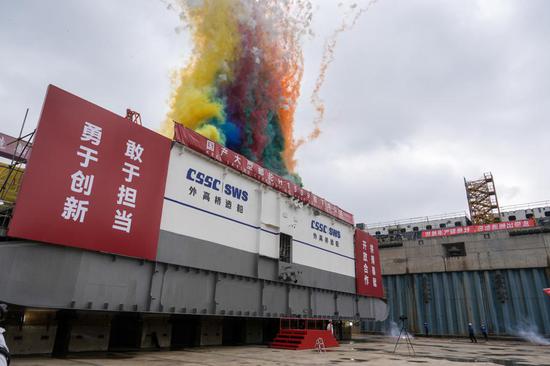
A keel laying ceremony of China's second domestically-produced large cruise ship is held on April 20, 2024 in Shanghai, marking the onset of the vessel's hull structure assembly and another achievement of China's shipbuilding prowess. (Photo by Chen Mengze/for China Daily)
A keel laying ceremony of China's second domestically-produced large cruise ship was held on Saturday morning in Shanghai, marking the onset of the vessel's hull structure assembly and another achievement of China's shipbuilding prowess, according to official sources.
Chen Gang, general manager of the vessel's builder China State Shipbuilding Corporation's (CSSC) Shanghai Waigaoqiao Shipbuilding Co Ltd called the ceremony a milestone in China's cruise industry development.
"In comparison with the first one, the second homegrown cruise ship was built more efficiently in terms of design and construction, with higher quality and standards," said Chen.
The vessel has currently completed 20 percent of its total construction workload, with its design, construction, procurement and logistics well underway.
Garnering ample experience from building the first China-made cruise ship Adora Magic City, CSSC has optimized the construction of a second large cruise ship and enhanced the efficiency by 20 percent, said Chen Jianwei, assistant to the general manager of China State Shipbuilding Corporation's (CSSC) Shanghai Waigaoqiao Shipbuilding Co Ltd.
The efficiency improvement will come along with design optimization, including supply chain development and management, as well as process innovation, according to Chen.
To be named and delivered by the end of 2026, the vessel is expected to get floated in May 2025, which means its construction is at the halfway mark and ready for undocking in March 2026, said Chen, who is also the construction director of Shanghai Waigaoqiao Shipbuilding's large cruise project.
The 141,900-gross-tonnage ship will be 341-meter-long and 37.2-meter-wide, 17.4 meters longer than the first one. In the meantime, the vessel will add 19 more guest rooms to expand its rooms to 2,144.
China's first self-made cruise ship Adora Magic City launched its maiden commercial voyage on the first day of 2024, and has successfully completed 26 trips and served more than 100,000 passengers home and abroad so far, official sources said.

Related news
Int'l cruise ship carrying nearly 2,000 tourists arrives in China's Tianjin
Cruise ship industry poised for new golden era
New energy cruise ship to operate in night tour
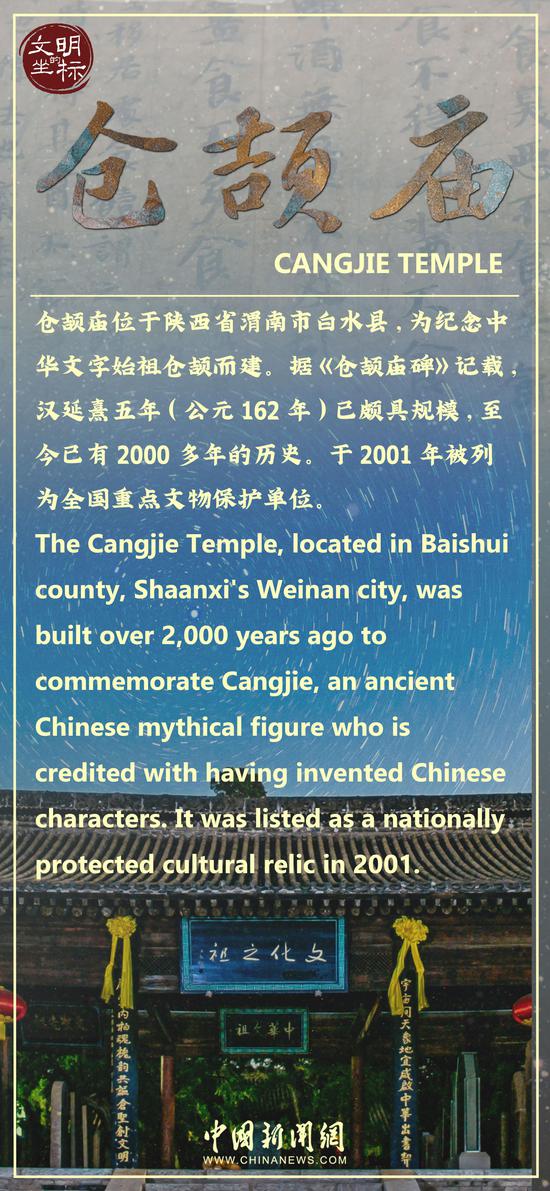
Cradle of civilization: The Cangjie Temple

In numbers: China-Slovenia relations

Culture Fact: UN Chinese Language Day
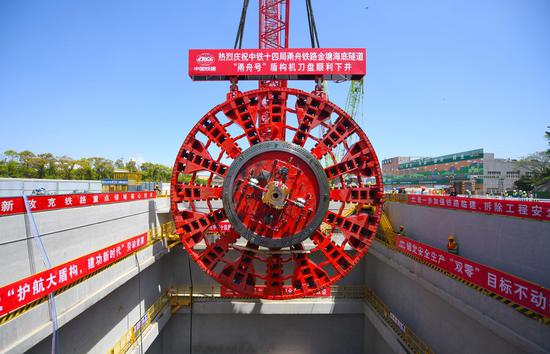
Tunnel boring machine Yongzhou installed in E China
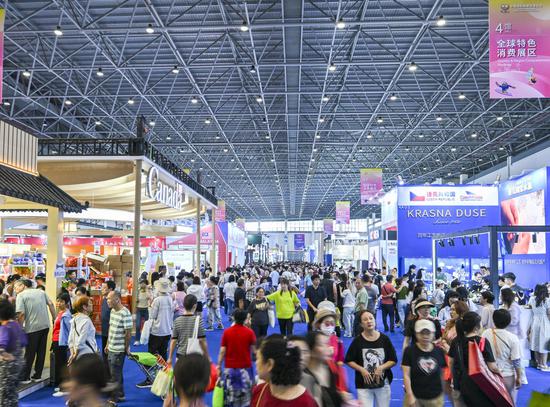
4th China International Consumer Products Expo concludes
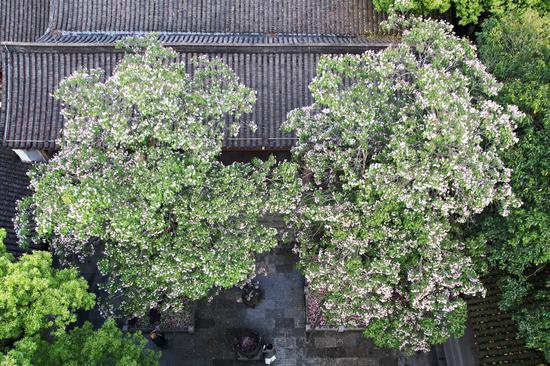
Centuries-old tree blooms in Hangzhou

China Post issues commemorative stamps of Chengjiang Fossil Site
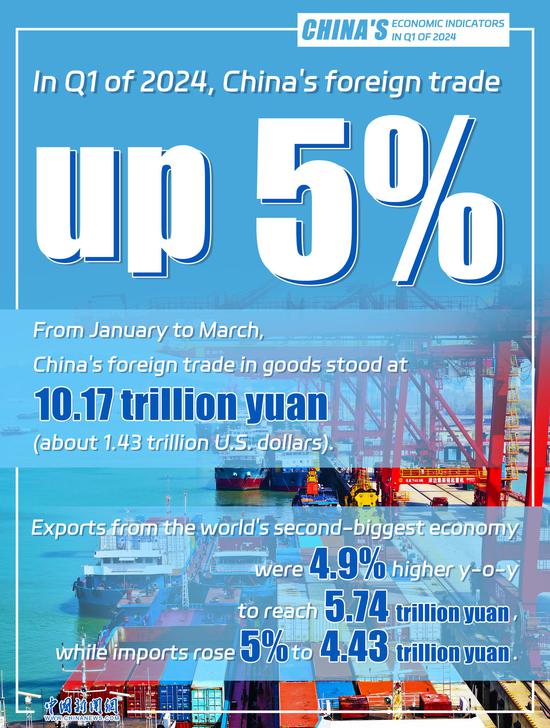
In Numbers: China's economic indicators in Q1 of 2024

China receives 38 cultural relics returned from U.S.
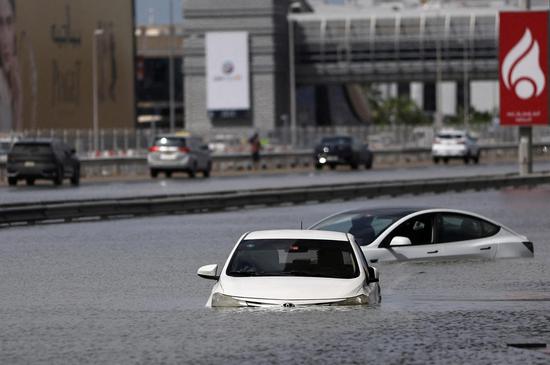
Storm dumps heaviest rain ever recorded in UAE

Panda strolls in flowers
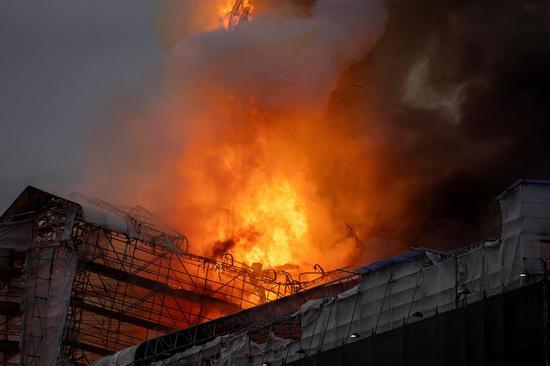
Historic Copenhagen stock exchange in flames

China ready to launch Shenzhou-18 crewed spaceship
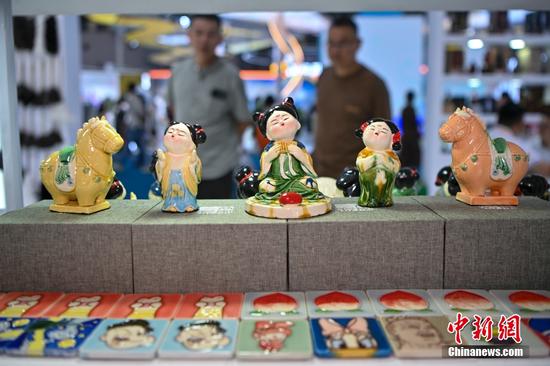
Products of Chinese culture shine at CICPE 2024

Flame for Paris 2024 Summer Olympic Games lit in Ancient Olympia

Blooming water lilies in West Lake resemble Monet's painting

Xi meets German chancellor, calls for achieving mutual success

In pics: 798 Art Zone

Pear blossoms accentuate the beauty of Hanfu
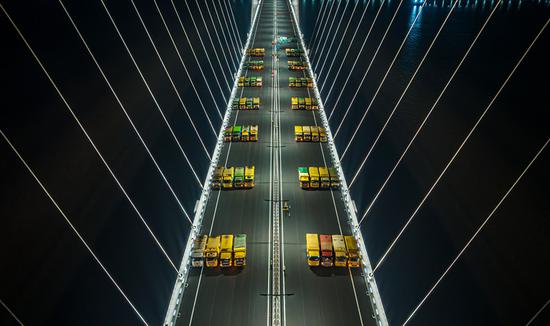
Transportation hub undergoes load testing in Greater Bay area
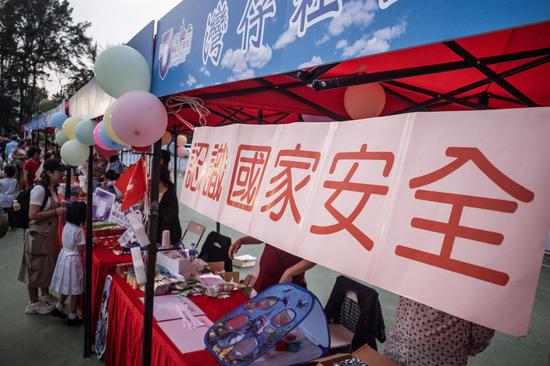
National Security Education Day marked in Hong Kong

135th Canton Fair opens with over 29,000 exhibitors
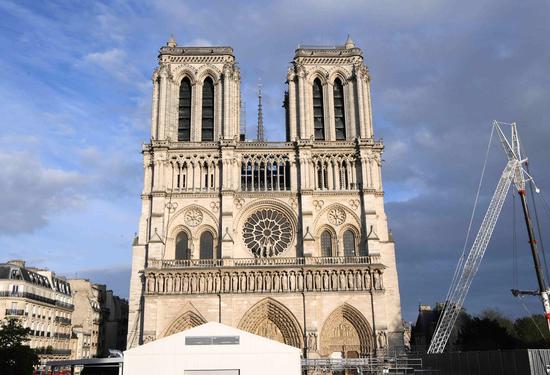
Notre Dame Cathedral restoration nears completion after 5 years
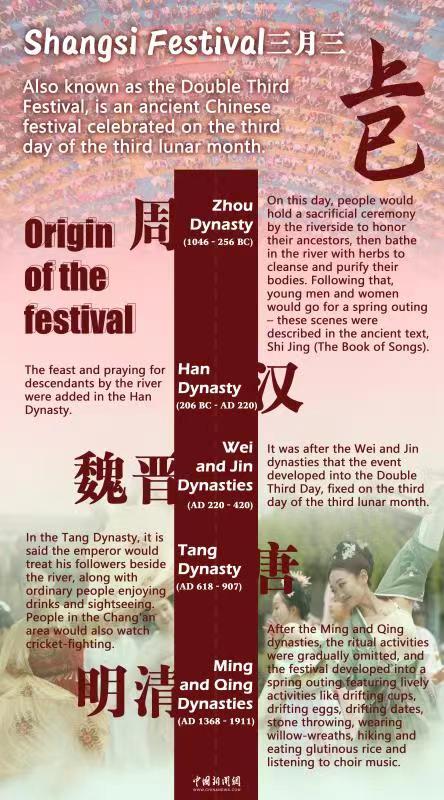
Culture Fact: Shangsi Festival

UN Security Council holds emergency meeting after Iran's retaliatory attacks on Israel

German Chancellor Olaf Scholz starts China visit

In Numbers: China, Germany cooperation yields fruitful results

Cradle of Civilization: Zuojiang Huashan Rock Art
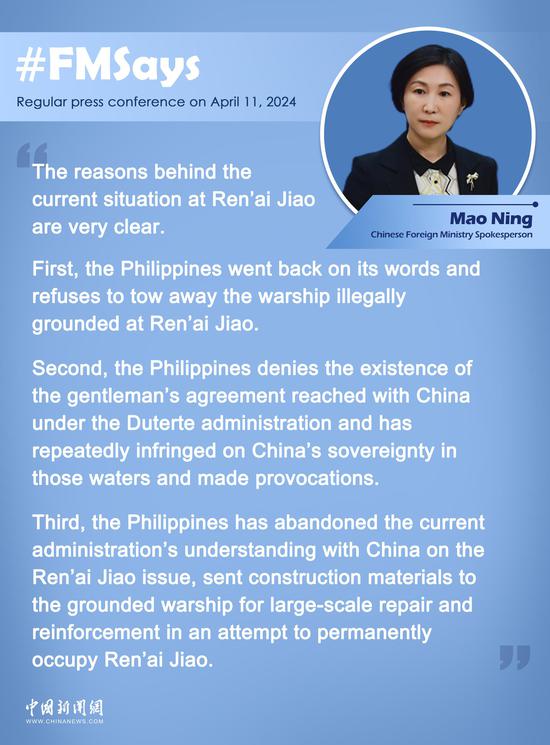
China is committed to managing Ren'ai Jiao issue through dialogue and consultation: FM spokesperson

Queqiao 2 satellite ready for future communication service

Beijing subcenter station set to operate in 2025

Ethnic groups across China celebrate Sanyuesan

To invest in China is to invest future: FM spokesperson
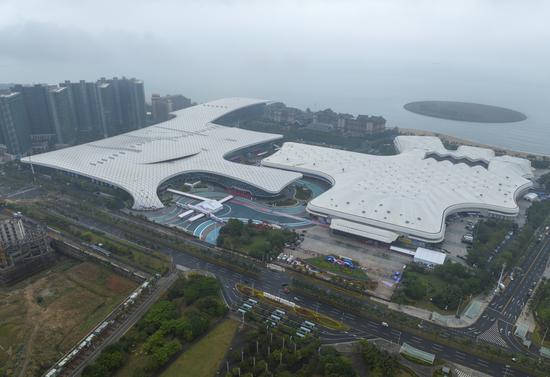
Preparation for 4th China Int'l Consumer Products Expo in full swing

Water quality of Seine River draws concern before Paris Olympics
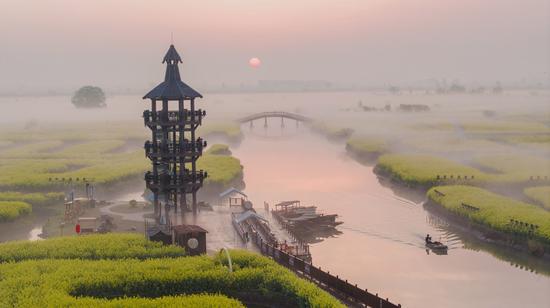
Beautiful sunrise scenery of mist-shrouded cole flowers
Most popular in 24h, more top news.
- Foreign Minister calls for Palestine's admission as UN member
- Deep sea exploration vessel docked in Nansha
- Suzhou a pillar in showcasing China's vibrant traditional culture
- Colorful Guizhou wind blows to Paris

Shenyang Forest Zoo welcomes newborn animals

Insights丨Rupert Hoogewerf: Emerging industries accelerates China’s GDP growth


IMAGES
VIDEO
COMMENTS
Galley: The kitchen. Hull: The main body of the ship. Lido deck: A commonly used phrase indicating the location of the pool and additional amenities like bars, restaurants, and fitness centers ...
Next images show expedition yacht cruise ship design by the Dutch shipbuilder Damen Group. The vessel is "Polar Class 6" (with ice-strengthened hull) and has endurance 30 days autonomous cruising. The ship has approx 1100 m2 public space and 2500 m2 outdoor deck space. Max capacity is 115 passengers.
The 80% left over part of a regular cruise ship is created to be employed by passengers, which is light and open as it can be. Looking higher up the cruise ship, you will realize that it gets more open and lighter in weight which is aimed at limiting the weight. The pool is only an exception.
The bottom of a cruise ship is commonly referred to as the "hull.". The hull is the watertight body of the ship, extending from the main deck to the very base. It is integral to buoyancy, stability, and the overall structural framework of the vessel. Built to counteract water pressure, stave off corrosion, and facilitate smooth sailing, the ...
Cruise ships are large passenger ships used mainly for vacationing. Unlike ocean liners, which are used for transport, cruise ships typically embark on round-trip voyages to various ports of call, ... A distinctive feature of the Oasis-class ships is the split, atrium structure, ...
Think back to old ships like the Titanic. Steam pressure in chambers pushed pistons up and down. The pistons were connected to a crankshaft, which turned the vertical motion of the pistons into a ...
Learn how cruise ships are designed and built of blocks, how fire is a concern, how vibration is minimized, how weight is optimized, and how watertight compartments are essential. Discover the stories behind the design and engineering of some of the most iconic cruise ships, such as Carnival Vista, Celebrity Solstice, and Ovation of the Seas.
STX Europe, Meyer Werft and Fincantieri are the main builders of cruise ships. STX Europe is responsible for Royal Caribbean's Allure of the Seas, which was built in Finland, while Celebrity Edge ...
The largest designated cruise ship as of present-day is the very recent Wonder of the Seas, with a whopping gross tonnage of 236860, a length of over 360 meters, a width of 65 meters, and can accommodate nearly 7000 passengers on board! Launched in January 2022, it is slated to create history by embarking on its maiden voyage in March.
Atrium: A lobby-like space where you'll find the purser or guest services. Beam: The broadest part of the ship's hull. Berth: The "parking spot" where the ship docks in a port of call, or a bed on a cruise ship. Cabin steward: The crew member who cleans and maintains your stateroom. Captain: The commander of the ship.
Here's when the drafting begins. The ship's superstructure is outlined from different views to map out proportions and placements of decks above and below the waterline. The signature side profile takes shape at this stage. Outline Specification. Foreship says this is a state-of-the-art, 100-plus-page document.
Cruise ships have become massive, yet constructing them can take as little as 11 months! Today, we will look at the fascinating way cruise ships (including t...
Learn about the process of building a cruise ship from start to finish, from the design and engineering to the construction and delivery. Discover how the Celebrity Apex, the second in a series of five Celebrity Edge ships, was built in stages and with thousands of decisions and logistical planning protocols. See how cabins, amenities, and features are installed and optimized for the ship's performance and passenger experience.
Cruise ships are massive, complex vessels that take significant time and resources to construct. With so many pieces to assemble and intricate designs to create, modular production line construction methods are invaluable in building a cruise ship. ... This is the outermost layer of the ship that provides the necessary protection and structure ...
Modern passenger cruise ships are also from structural point of view very complex objects that vary very much from one design to another. Hence assessment of such a kind of ship is difficult if not impossible to do only by application of conventional rule formulas since they are usually developed and suitable to apply on similar structural ...
The stability of a cruise ship is not only depends on its geometry but also on how the structures are arranged inside the vessel to help it stay afloat during undesired events such as flooding due to collision or grounding of the vessel. In cases of flooding, water-tight compartments and water-tight bulkheads help in retaining water in specific ...
An average-sized cruise ship typically has a passenger capacity of around 2000-2500 and a crew complement of 600-1000, which is predominantly divided amongst the following departments, viz., Deck, Engineering, Food & Beverage, Housekeeping, Sanitation, Guest Services, Laundry, Spa, Medical, Entertainment, Photography, Merchandise, IT, HR, Shore ...
Condé Nast Traveler. 2011-2014. Every Princess ship is a destination in itself with wide-ranging amenities, elevated culinary experiences and delightful activities. Below you'll find the deck plans, stateroom details, ship dining information and more for every vessel in our fleet. Visit the links, and get to know what we offer and what makes ...
Carrying about 2,000 to 3,000 passengers apiece, Celebrity's 13 main vessels are large but not giant by today's standards. At around 91,000 to 141,000 tons, they're nowhere near as big as the giant ships operated by Royal Caribbean, MSC Cruises and Norwegian Cruise Line.. The line's three Galápagos-based vessels are downright tiny, as they have to be to operate in the Galápagos.
Company structure Carnival Cruise Line headquarters in Doral, Florida. Carnival is one of ten cruise lines owned by the world's largest cruise ship operator, the American-British Carnival Corporation & plc.In 2021, Carnival Cruise Line was estimated to hold a 7.6% share of cruise industry revenue and 18.2% of passengers. It has 24 vessels and is the largest fleet in the Carnival group.
Working on a cruise ship is a unique environment. Although one may argue that it's just a floating resort, a look closer identifies that hierarchy and ranks are embedded in each cruise job onboard. ... In the past, cruise ship hierarchy was a very militarized organizational structure with lower ranks rarely questioning the authority of higher ...
For a deeper understanding of overall cruise ship rank structure, take a look at this post Understanding Cruise Ship Ranks. (Note: on some cruise lines some of the above positions will be uniformed striped positions) Take a look at the below guide to understand how cruise ship crew officer ranks affect how many stripes they wear. The next time ...
There's a reason Royal Caribbean's new mega-cruise ship is only operating seven-night sailings. The 1,196-foot-long, 20-deck Icon of the Seas is packed with bars, restaurants, and things to do.
Celestyal Cruises' ship Celestyal Journey collided with the pier at Port Kusadasi Turkey during an unsuccessful docking maneuver.. The incident occurred on Monday, April 15, around noon, as the 12-deck ship approached the dock at an excessive speed. The ship is currently operating a 7-day "Idyllic Aegean Cruise" (itinerary April 13-20) roundtrip from Piraeus-Athens.
A keel laying ceremony of China's second domestically-produced large cruise ship is held on April 20, 2024 in Shanghai, marking the onset of the vessel's hull structure assembly and another ...